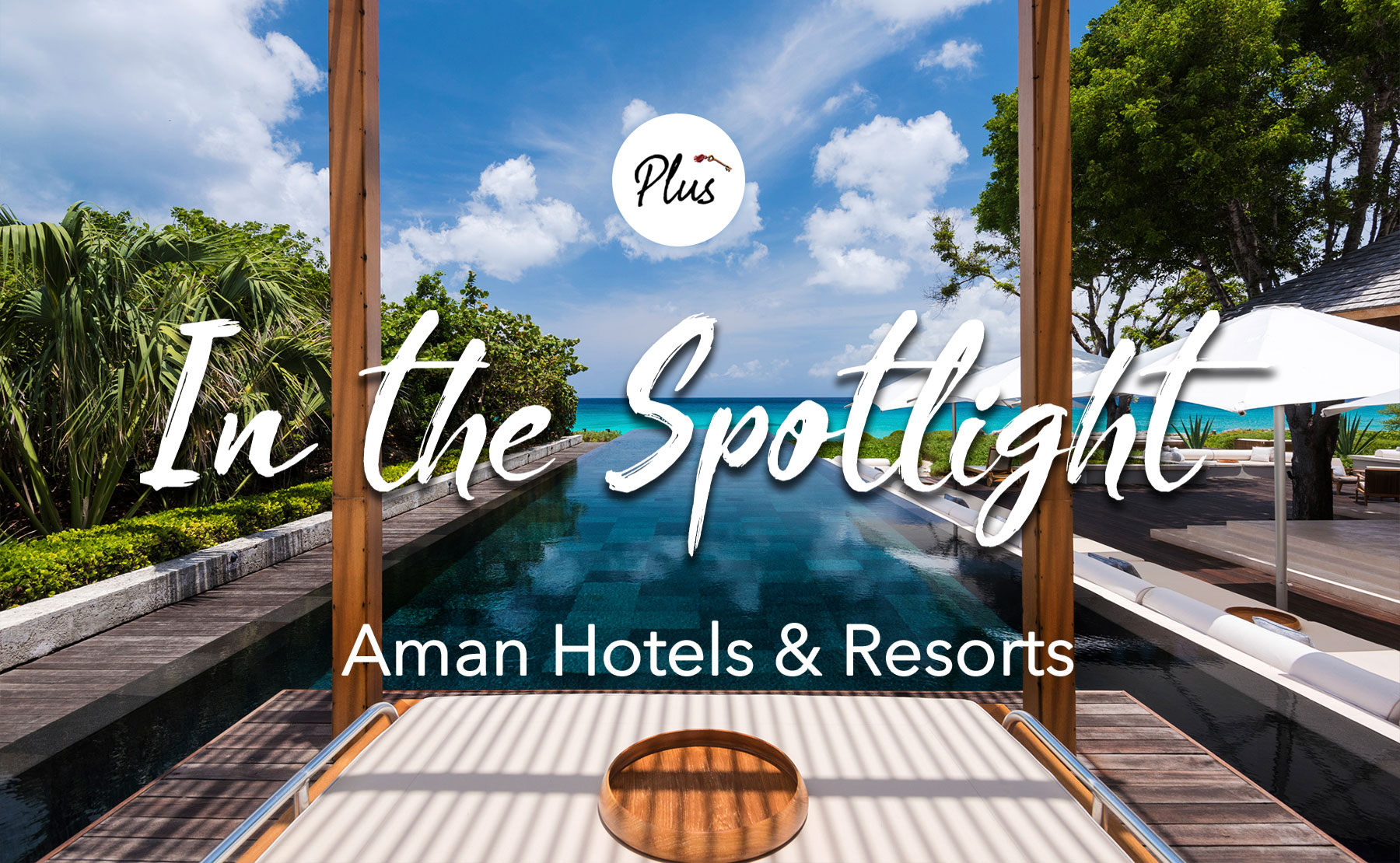
Click on each hotel to see the privileges they offer. Click here to learn more about Tablet Plus.

Amangani
Jackson Hole, USA
The legendary Amangani is not just Jackson Hole’s most exclusive resort, but its most impressive as well. Perfectly tucked in the foothills of the Grand Tetons and looking out across the mountains and plains of the Snake River Valley, the all-season retreat invites guests to discover outdoor adventure and extraordinary natural beauty.
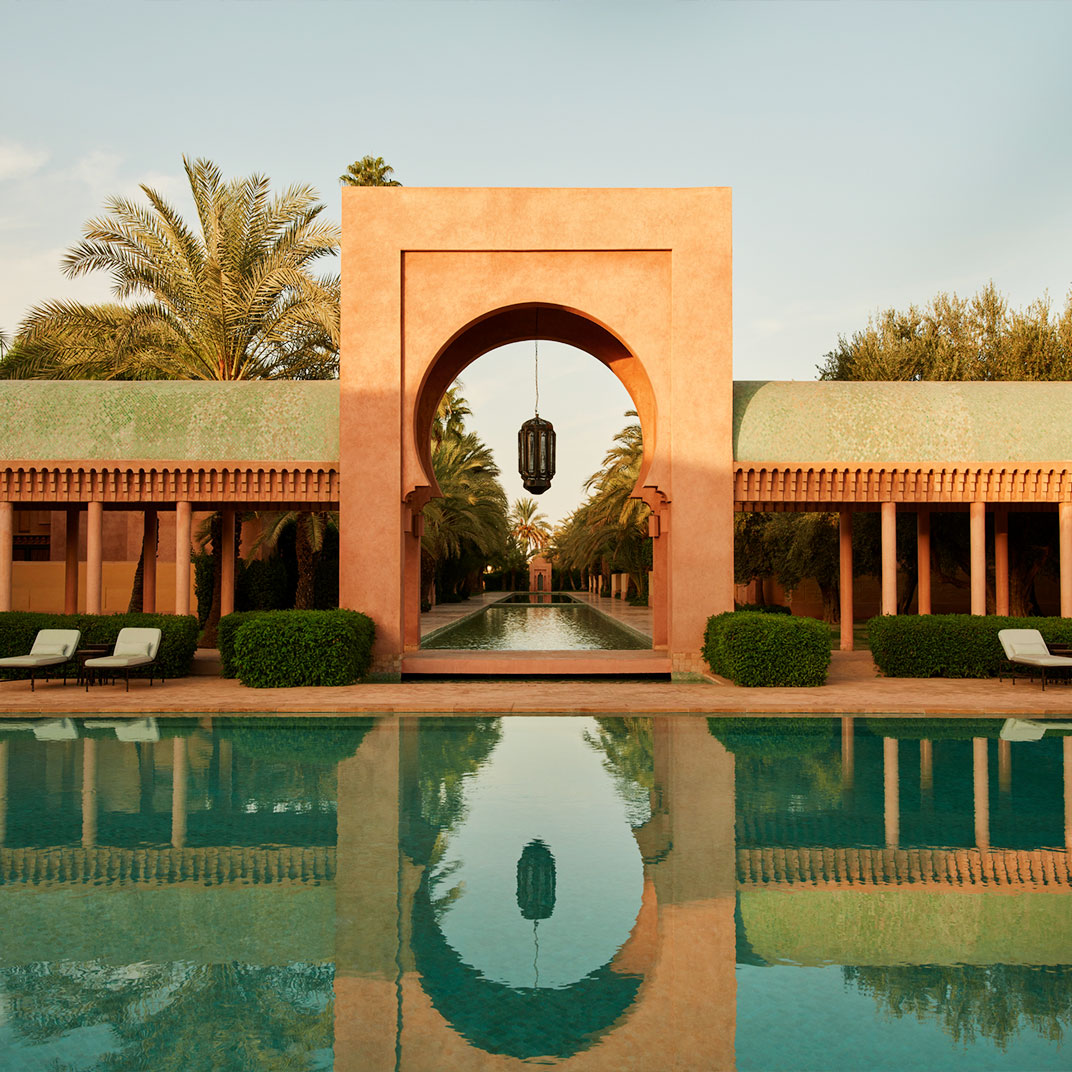
Amanjena
Marrakech, Morocco
Aman Resorts meets Africa in the form of Marrakech’s Amanjena. Designed by the American architect Ed Tuttle to conform harmoniously to its surroundings, Amanjena bears a distinct Moorish influence, including the 40 guest Pavilions and Maisons that radiate from an ancient bassin. A variety of guided excursions into the Medina, the famous Djemaa el-Fna square, and the palaces, gardens and craft shops of ancient Marrakech are also available.
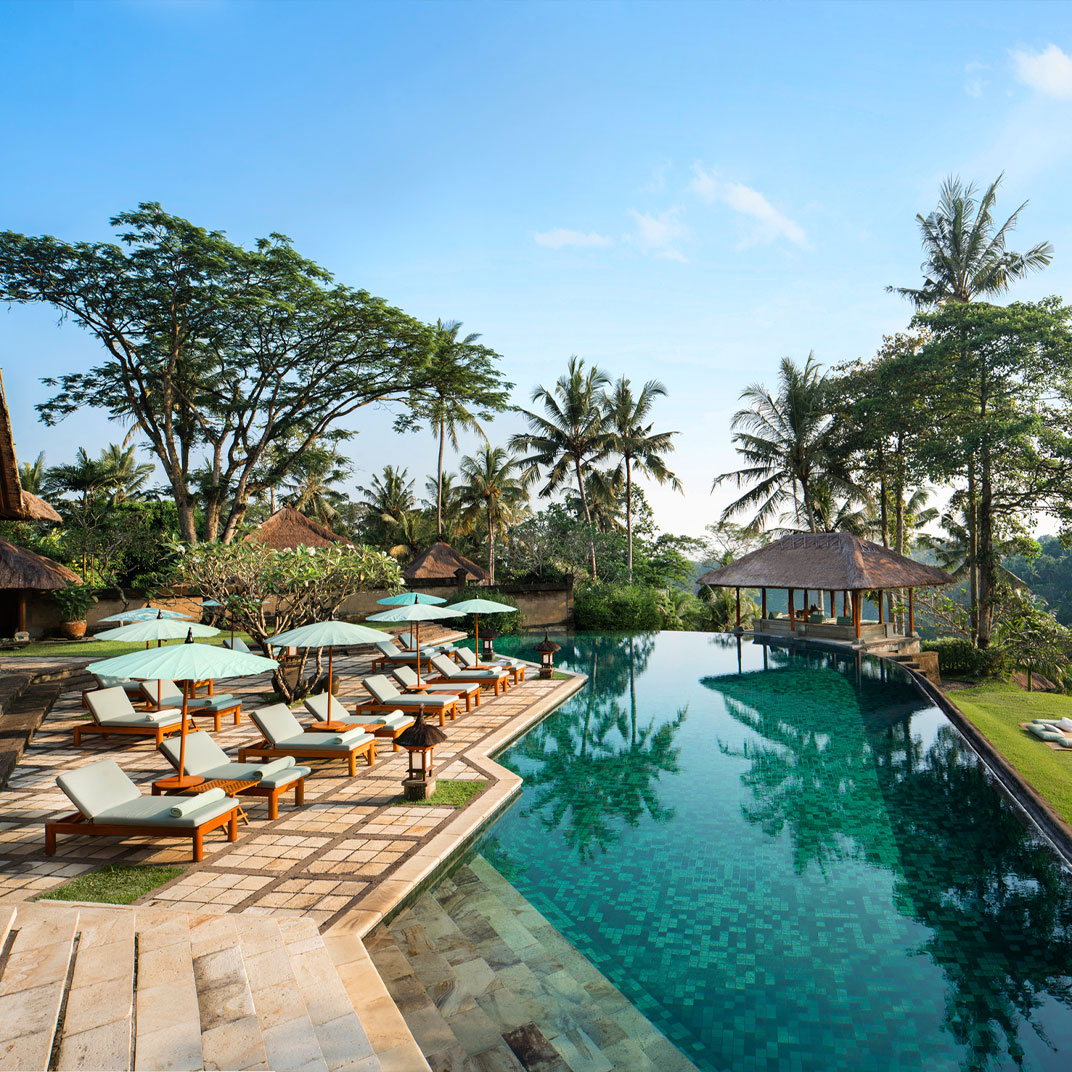
Amandari
Ubud, Indonesia
At Amandari, it’s all in the details, the execution, the way the resort seems to spring organically from the land. Perched high above the winding Ayung River Gorge in the design of a traditional Balinese village, the curving emerald swimming pool mimics the rice paddies below.
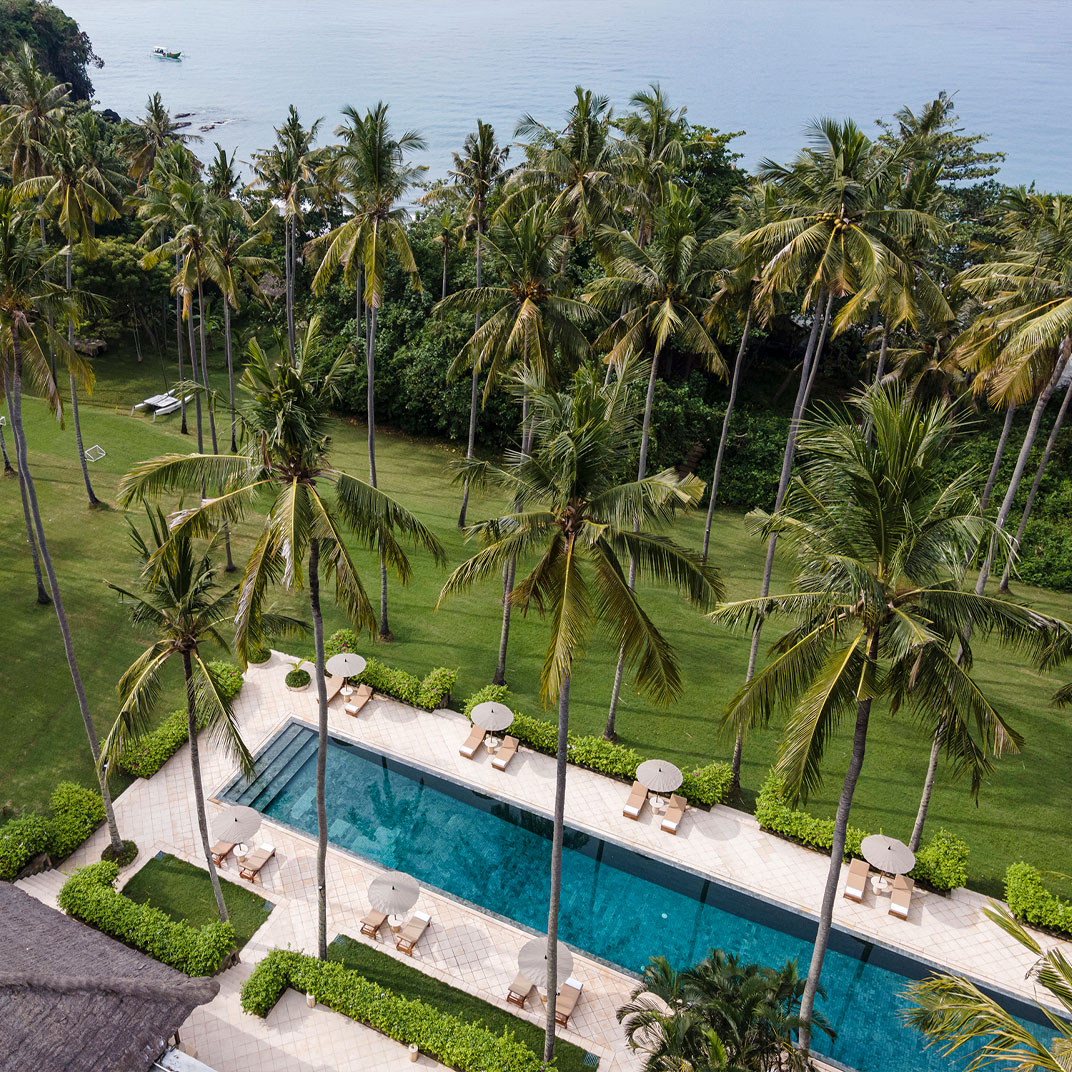
Amankila
Manggis, Indonesia
Trust the Aman resorts to show you a different side of Bali. Amankila’s location, on a cliff overlooking the Lombok Strait on Bali’s east coast, is one of the island’s most isolated resorts — and though the opening of the Denpasar-Klungkung road means that Amankila is a bit more accessible, it still feels as remote as ever.
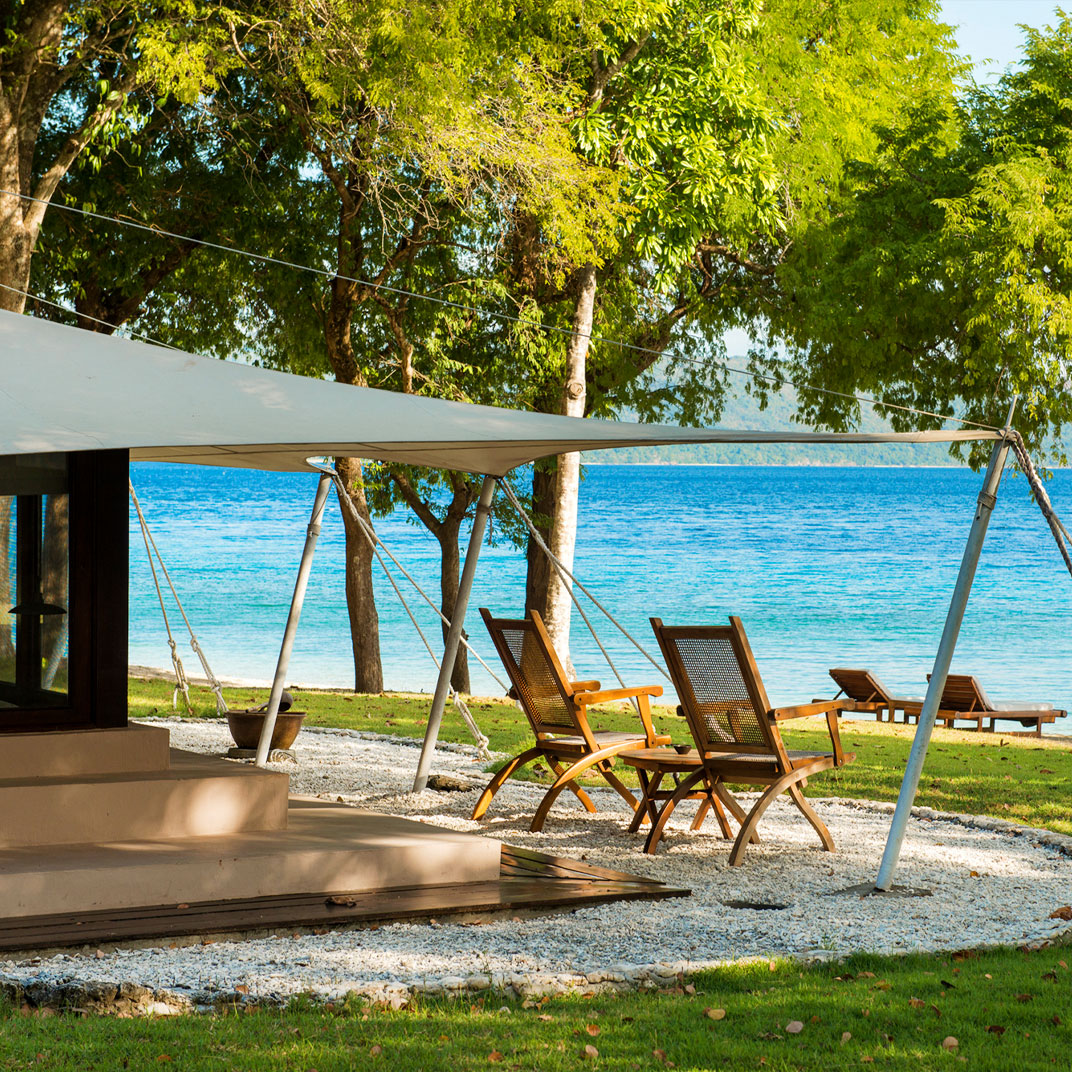
Amanwana
Moyo Island, Indonesia
Call it tunnel vision, or the herd mentality of the travel industry; for all the vastness that is Indonesia, most holiday visitors are drawn to Bali like moths to a light. Certainly, there’s no place like it — but conversely, there’s no place like the natural paradise of Amanwana, the only luxury-tented hideaway on Moyo Island — with some of the best diving and snorkeling in Indonesia.
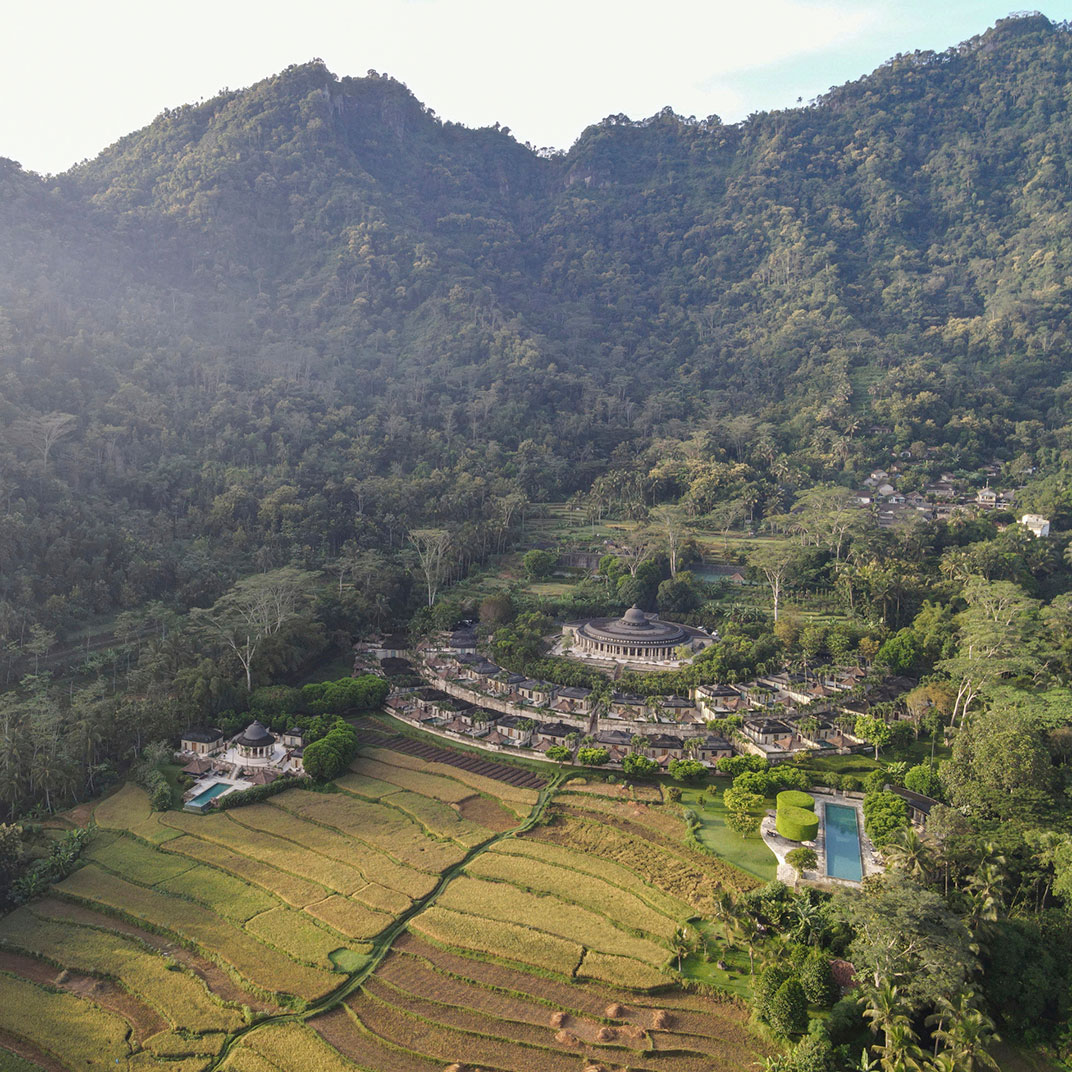
Amanjiwo
Yogyakarta, Indonesia
The simple fact that it’s an Aman resort high in the hills of central Java would be enough for most people, but Amanjiwo, it turns out, offers something a bit more otherworldly than the trademark Aman cocktail of clever design and world-class luxury. The views here are that much more sublime: for Amanjiwo looks out over not just acre upon acre of dense wooded valley, but a thirteen-hundred-year-old Buddhist monument as well.
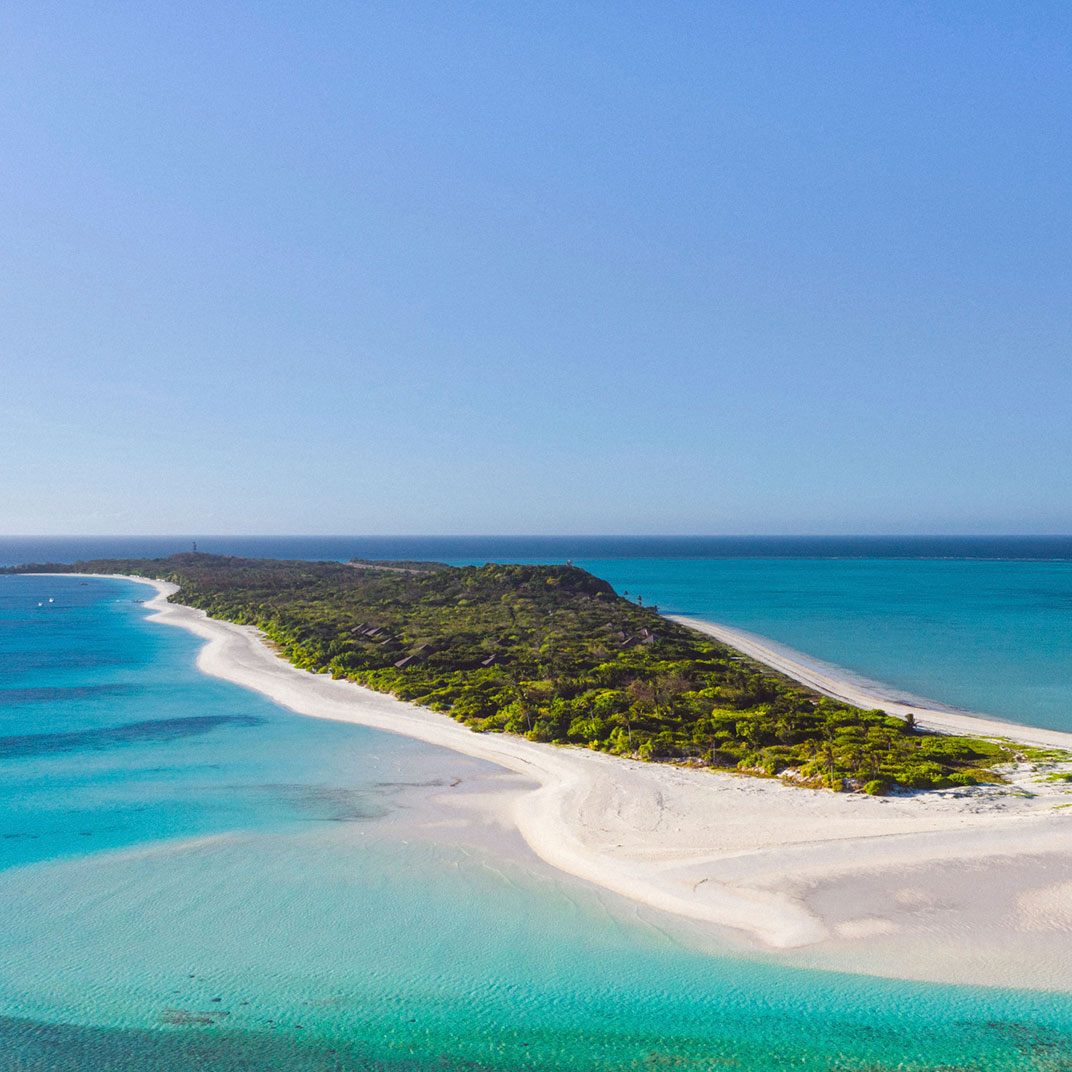
Amanpulo
Pamalican Island, Philippines
Amanpulo makes its home on the private island of Pamalican, one of thousands of islands in the Philippines. Surrounded by a coral reef, this tiny island rises just a few meters above sea level, offering incredible opportunities for water sports, snorkelling and diving, as well as island treks leading to lush jungle and secluded coves. There’s also an airfield upon which your charter flight from Manila, arranged by Amanpulo, will land.
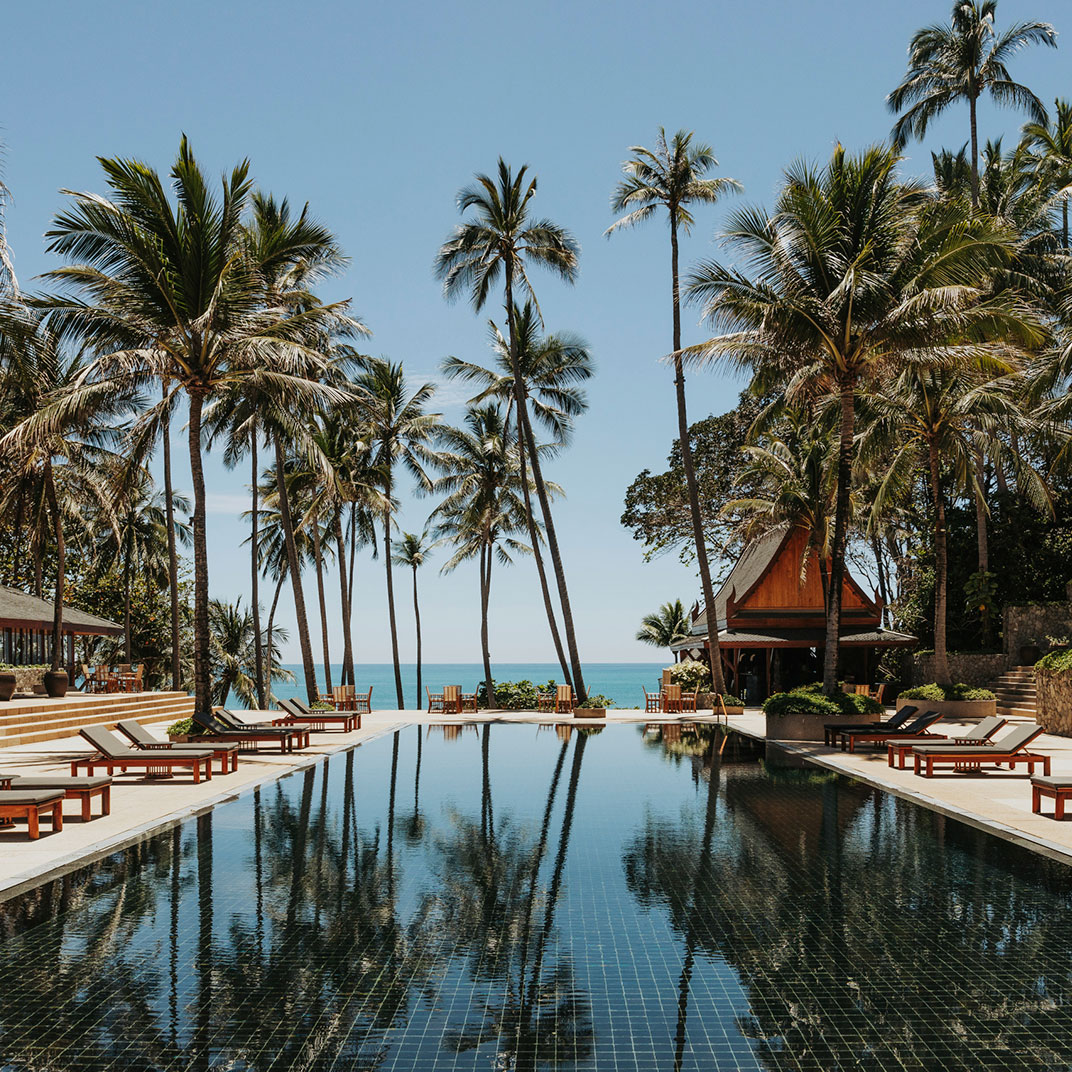
Amanpuri
Phuket Area, Thailand
This is where it all started: Amanpuri was the first Aman resort to open, and serves as the flagship for their winning blend of captivating design, classic luxury, stunning settings, and first-rate service. Here on the west coast of the island of Phuket lies an exclusive beachfront resort, occupying what was once a coconut plantation, isolated on a lush peninsula overlooking Pansea Beach. Built by the American architect Ed Tuttle, it’s a smart take on traditional Thai elements derived from the Ayutthaya period.
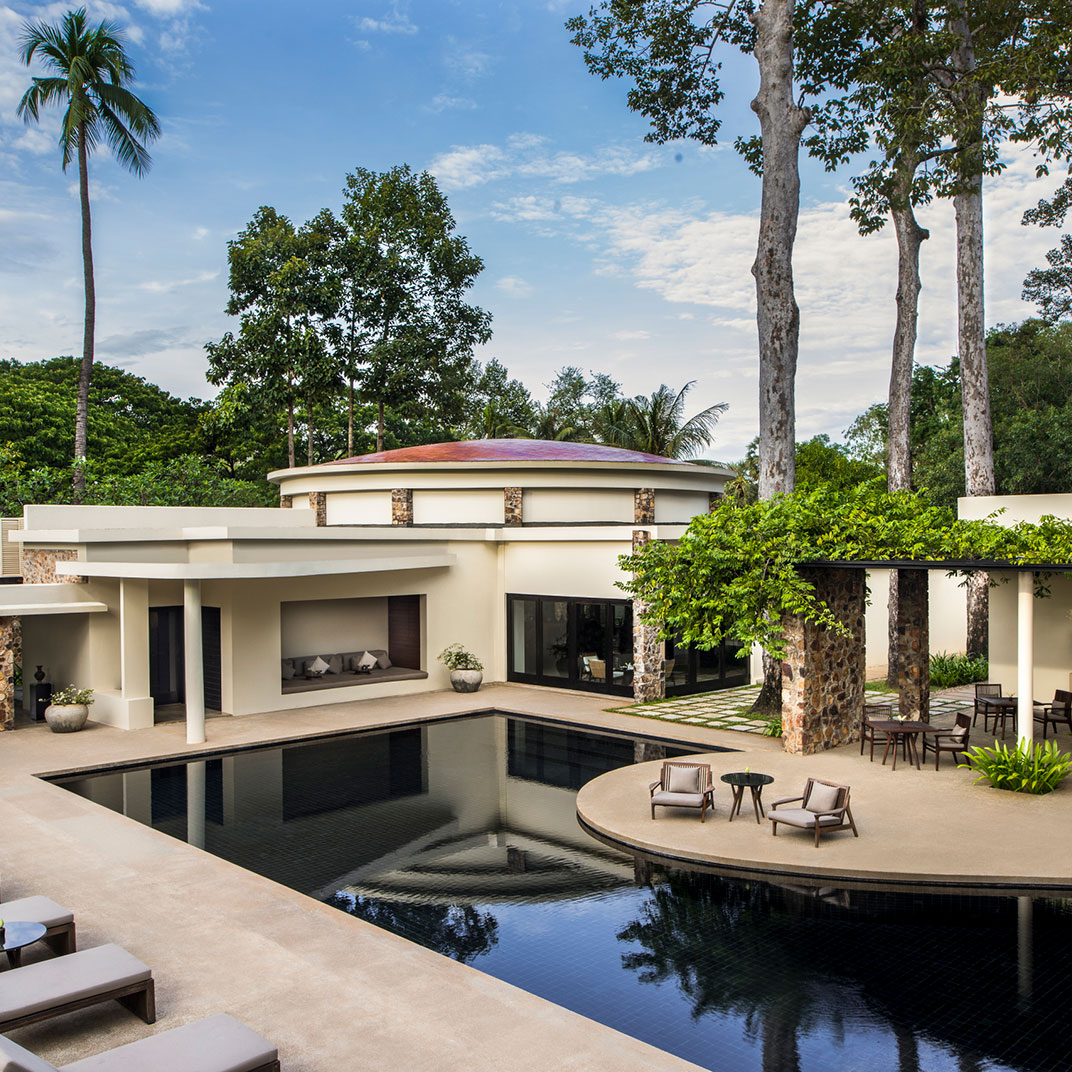
Amansara
Siem Reap, Cambodia
Amansara makes its home in Siem Reap, the closest city to Angkor, and the perfect location for temple expeditions — which can be enjoyed by private remork with a driver and guide. The resort was once King Sihanouk’s guest house; no neo-colonial palace, this villa was built in swinging New Khmer style, a sort of staging ground for the visiting statesman-about-town.

Aman Le Mélézin
Courchevel, France
Even upscale European ski resorts don’t usually come as elegant as Aman Le Mélézin. The location, in Courchevel 1850, could scarcely be more exclusive — there are several Courchevels, you see, each named for its elevation, and 1850 is the highest, both figuratively (some call it the 21st Arrondissement) and literally. Add to that the fact that Aman Le Mélézin is, despite its thoroughgoing Frenchness, a part of the Aman family, and you’ll have a pretty clear idea what all the fuss is about.
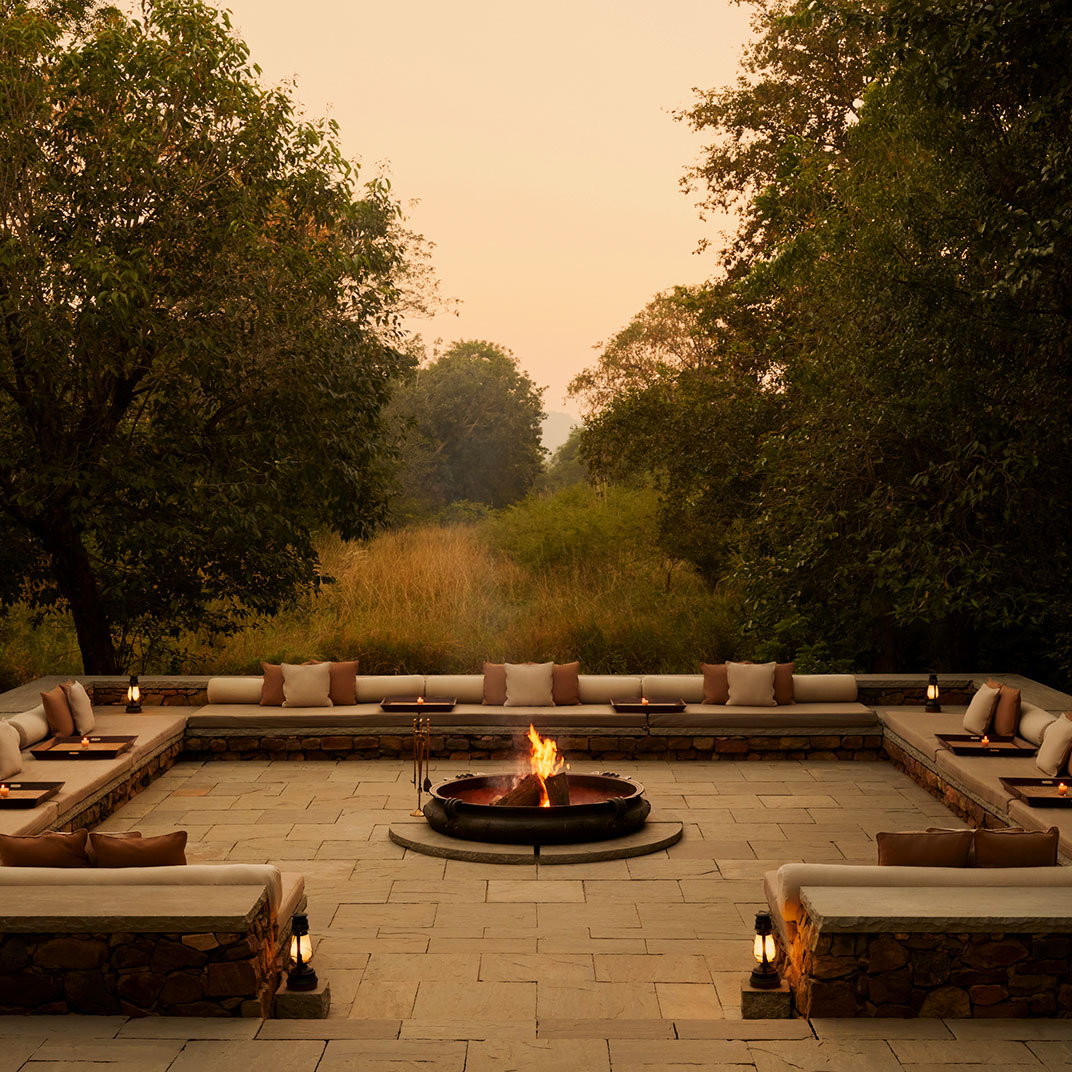
Aman-i-Khás
Ranthambhore, India
The latest Aman offering in India is a bit closer to nature than the norm — this resort, in Rajasthan’s Ranthambore National Park, is little more than an encampment of intimate tented accommodations, surrounded by acres of wilderness and wildlife as well as one of India’s top tiger reserves. A stay also includes twice-daily, guided safari excursions into the Park to spot indigenous game.
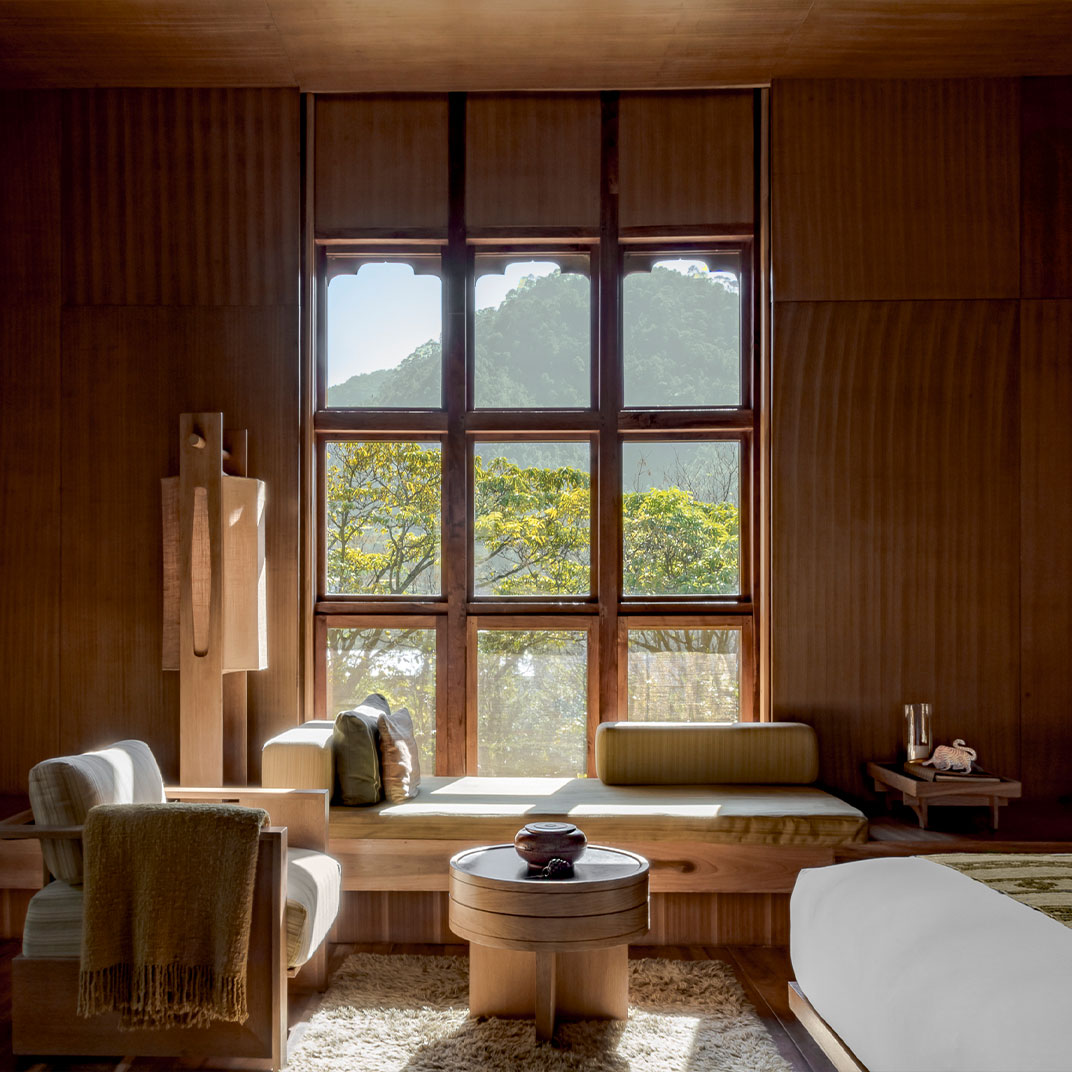
Amankora
Paro, Bhutan
Instead of a single hotel complex, Amankora is a slight departure. It’s a series of lodges, five at last count, spread across the valleys of central and western Bhutan — with locations near the towns of Paro and in the capital Thimphu, and the even more remote locales of Punakha, Gangtey and Bumthang.

Amanwella
Tangalle, Sri Lanka
There’s no mistaking Amanwella for anywhere but Sri Lanka. Here on a crescent-shaped beach lined with coconut groves stand thirty suites, from the outside, traditional wooden bungalows, while the interiors are bold and minimal, almost spartan in sharp lines of wood and concrete, with high loft ceilings and sleek modern furnishings. Plunge pools, private terraces and deep free-standing soaking tubs are standard, and every room boasts beautiful views.
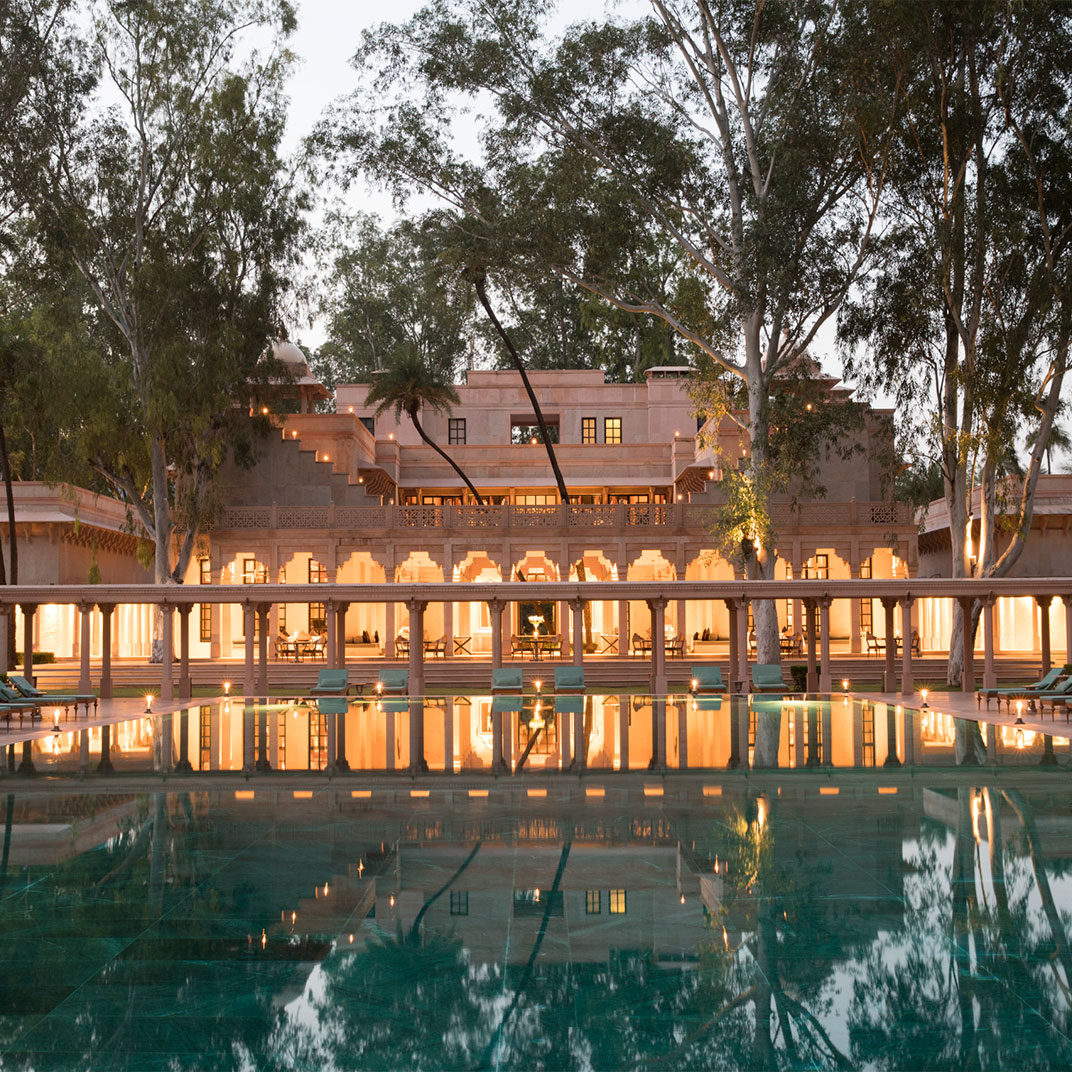
Amanbagh
Ajabgarh, India
This particular expression of Aman loveliness captures the lilting exoticism of Mughal Empire Rajasthan, and the property lies within a walled compound, once the staging area for royal hunts. Evoking the palatial elegance of the Mughal era, Amanbagh’s 22 Haveli Suites and 15 Pool Pavilions provide a tranquil base from which to explore the rich heritage of Rajasthan.
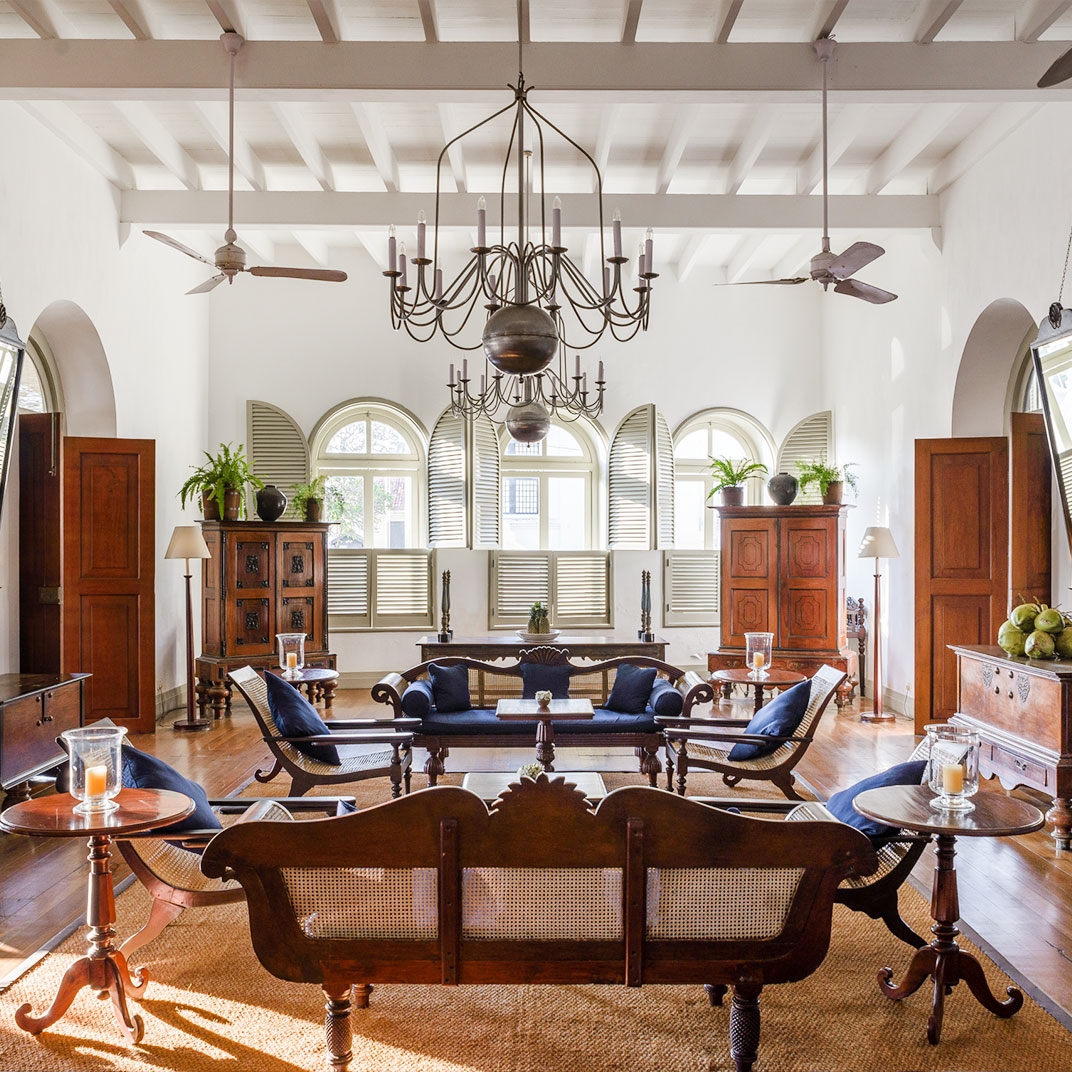
Amangalla
Galle, Sri Lanka
Amangalla lies within the ramparts of Sri Lanka’s 17th-century Galle Fort, a Unesco World Heritage Site, offering views of the Fort and harbour on one side and the hotel’s gardens and swimming pool on the other. The historic residence presents 31 guest rooms and suites, the two-story, free-standing Garden House, a tranquil spa known as the Baths and gracious dining venues. The property reveals the Fort’s daily activities and rich legacy, its narrow streets lined with buildings from the Dutch and British colonial eras.
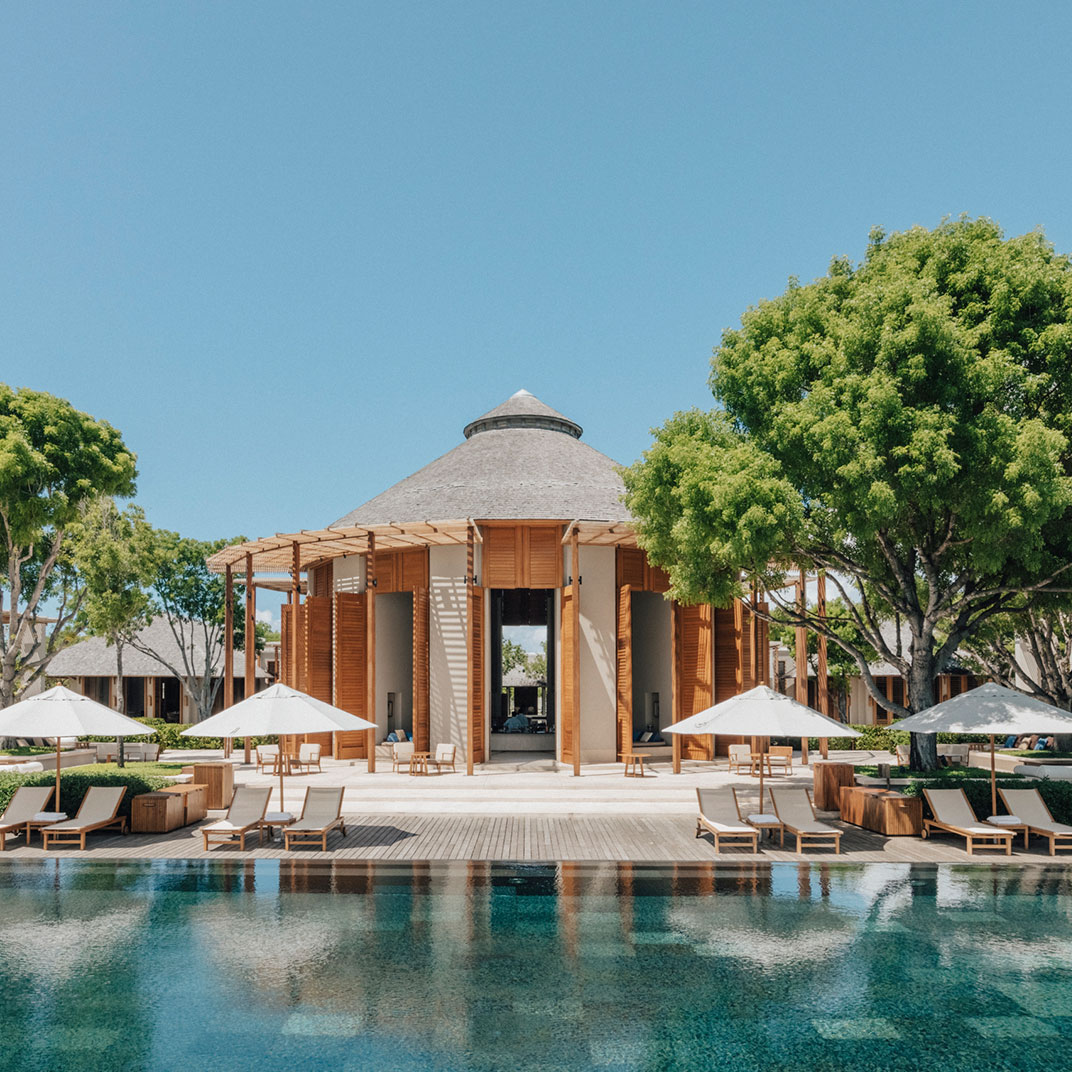
Amanyara
Providenciales, Turks and Caicos
Basking on the secluded shores of an 18,000-acre nature reserve, Amanyara’s lush tropical pavilions overlook half a mile of white sand and the turquoise waters of North West Point Marine National Park, on Providenciales in the Turks and Caicos. It is a retreat for all ages, with restorative wellness experiences and endless possibilities for discovery above and below the waves.
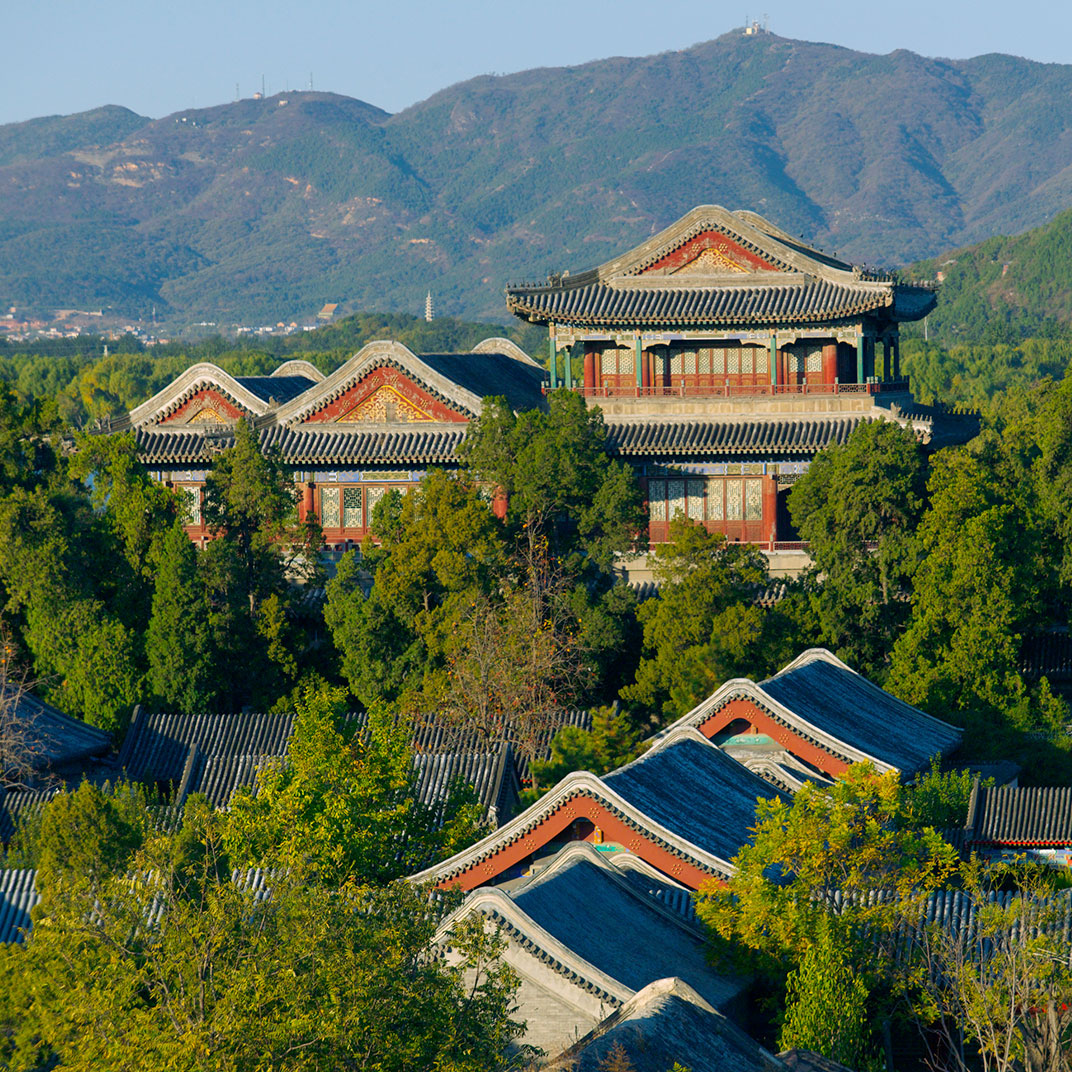
Aman Summer Palace
Beijing, China
Steps from the East Gate of Beijing’s Unesco-protected Summer Palace grounds, the Aman Summer Palace is a serene, 51-suite retreat just 15km from the Forbidden City. Its peaceful internal courtyards embrace traditional Chinese architecture, while the property features multiple dining venues and a unique underground recreational facility that includes Aman Spa, heated swimming pool, skylit gym, Pilates studio, private cinema, and squash courts.
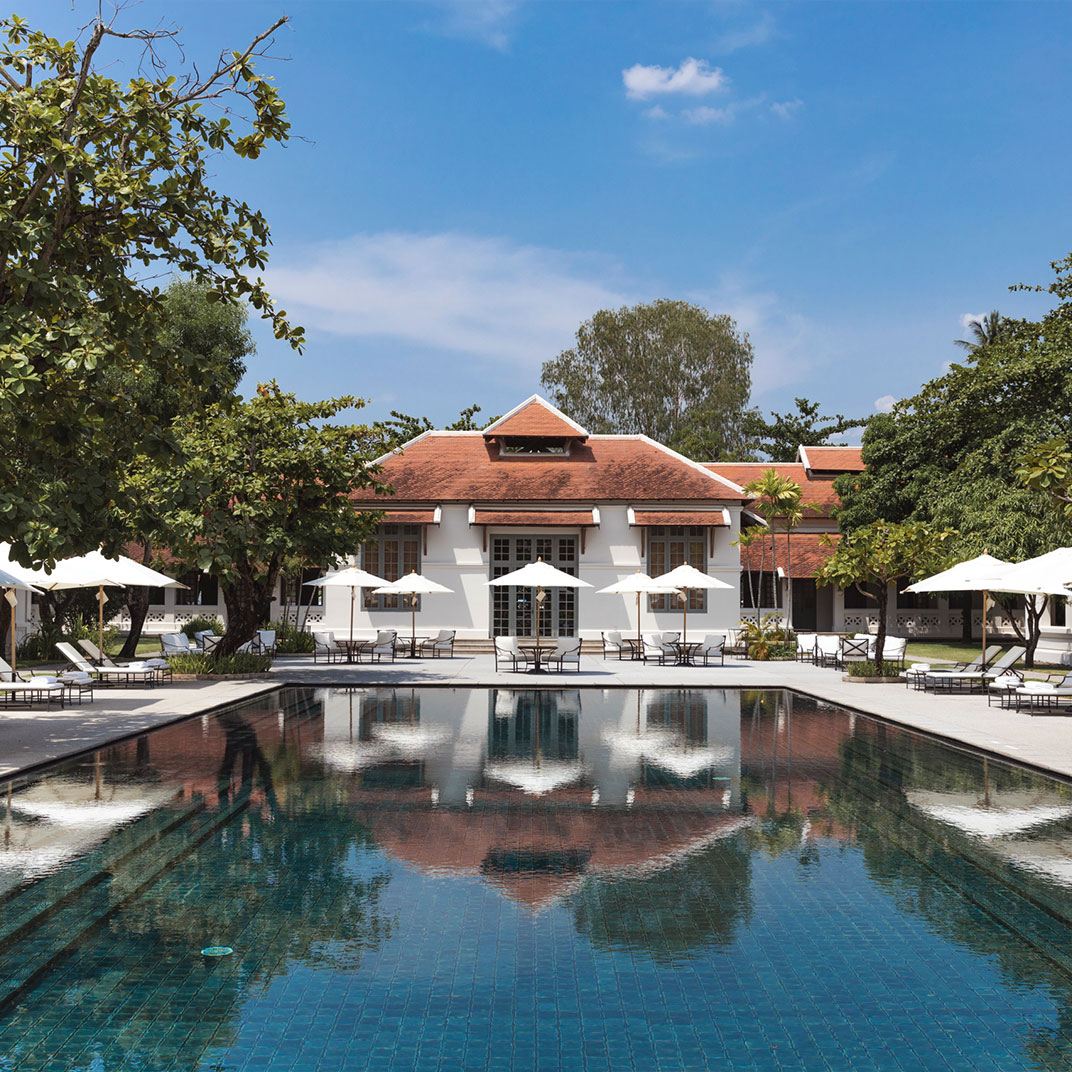
Amantaka
Luang Prabang, Laos
Many Aman hotels are ground-up productions, where every aspect of the building can be painstakingly controlled. Amantaka, by contrast, occupies an authentic French colonial building in old-town Luang Prabang, a city that’s as much a spiritual center as it is a leisure destination. While the building adds some historical gravity, it doesn’t detract at all from the perfectionistic luxury that is Aman’s stock in trade — and the meditative aspect of the setting is perfect for a proper escape.
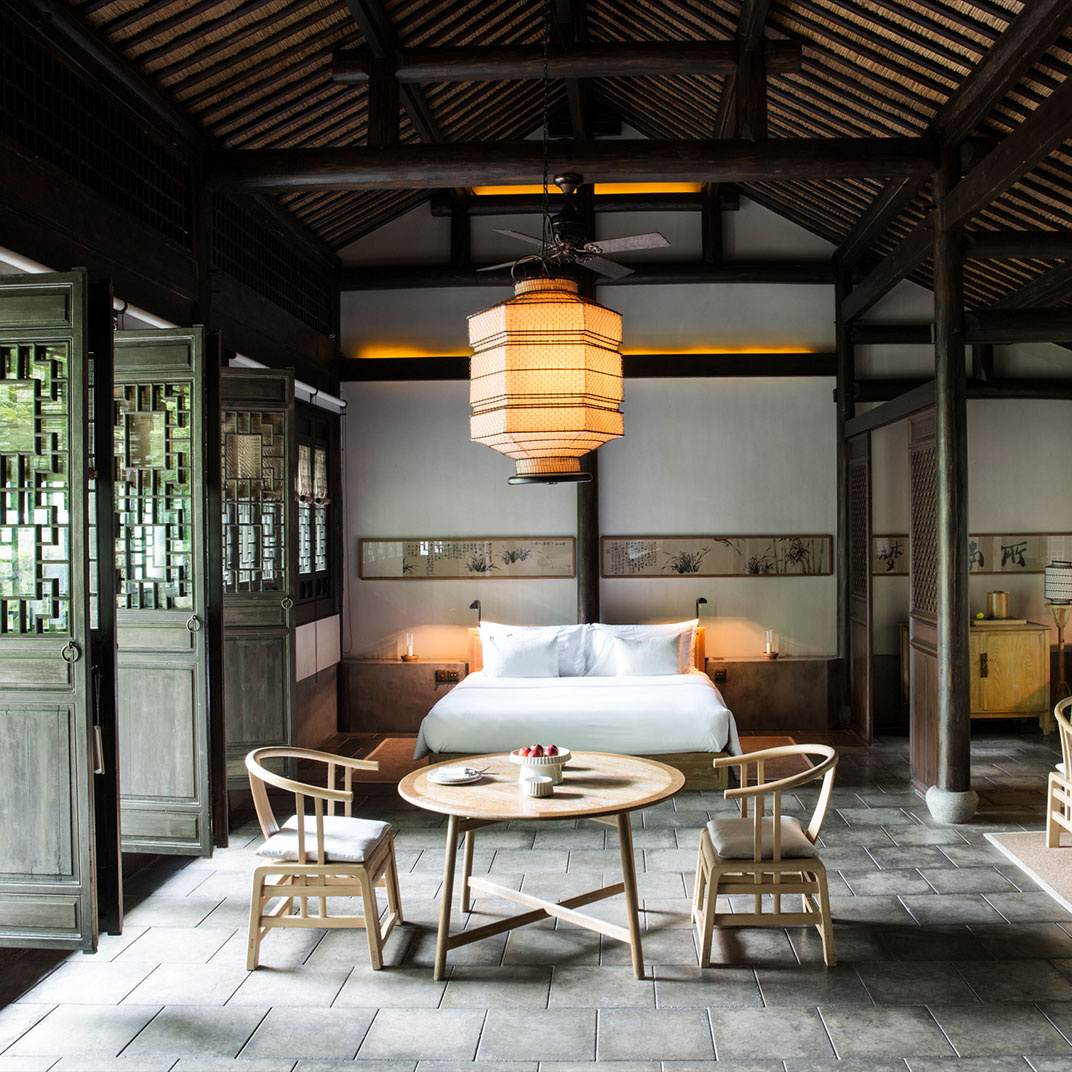
Amanfayun
Hangzhou, China
Privacy, discretion, understatement, and above all absolute tastefulness in every conceivable detail: this is what an Aman hotel is made of. At their Hangzhou outpost, set amidst the tea fields and bamboo groves on the outskirts of town, those values translate into forty luxurious courtyard dwellings, designed in the distinctive style of traditional Chinese courtyard homes.
Outside the sprawling grounds of the resort itself, Hangzhou’s famous West Lake is a short drive away (another benefit, in addition to the tranquil atmosphere, of Amanfayun’s out-of-town location). Closer still are seven of the historic sites on Hangzhou’s Temple Trail. From Amanfayun, you can walk to one of China’s most important and beautifully ornamented Buddhist temples, the sixteen-hundred-year-old Lingyin Si. Walking is indeed the way to to go — because even if you can afford it, a chauffeured car isn’t always the best look.
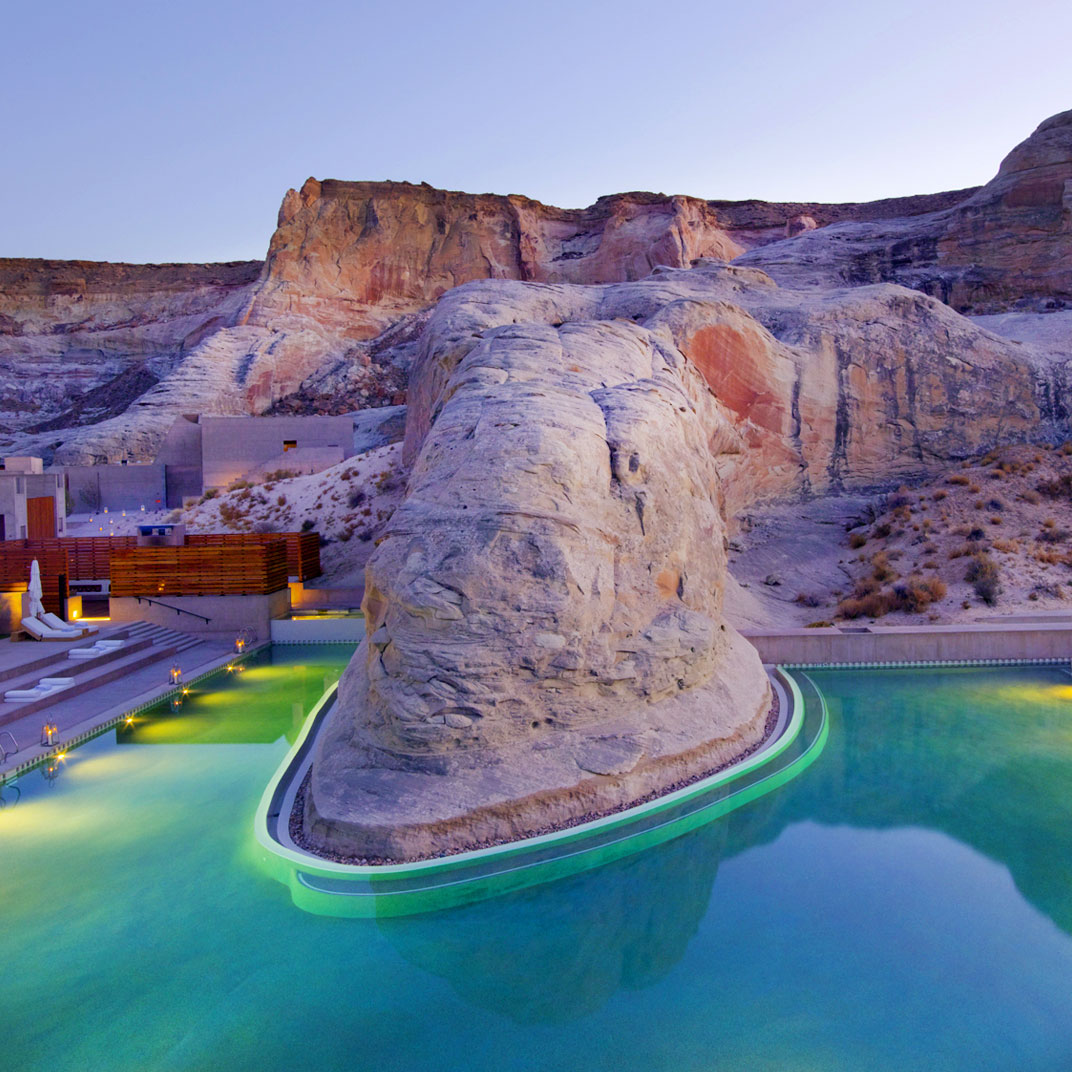
Amangiri
Lake Powell, USA
It’s hard to think of a less predictable setting than southern Utah for Amangiri, but the otherworldly landscape is inspiring indeed, and serves as the ideal canvas for this property. Perfectly blended into the red-rock surroundings, it claims 600 acres of vast land and boasts sweeping views towards the Grand Staircase-Escalante National Monument.
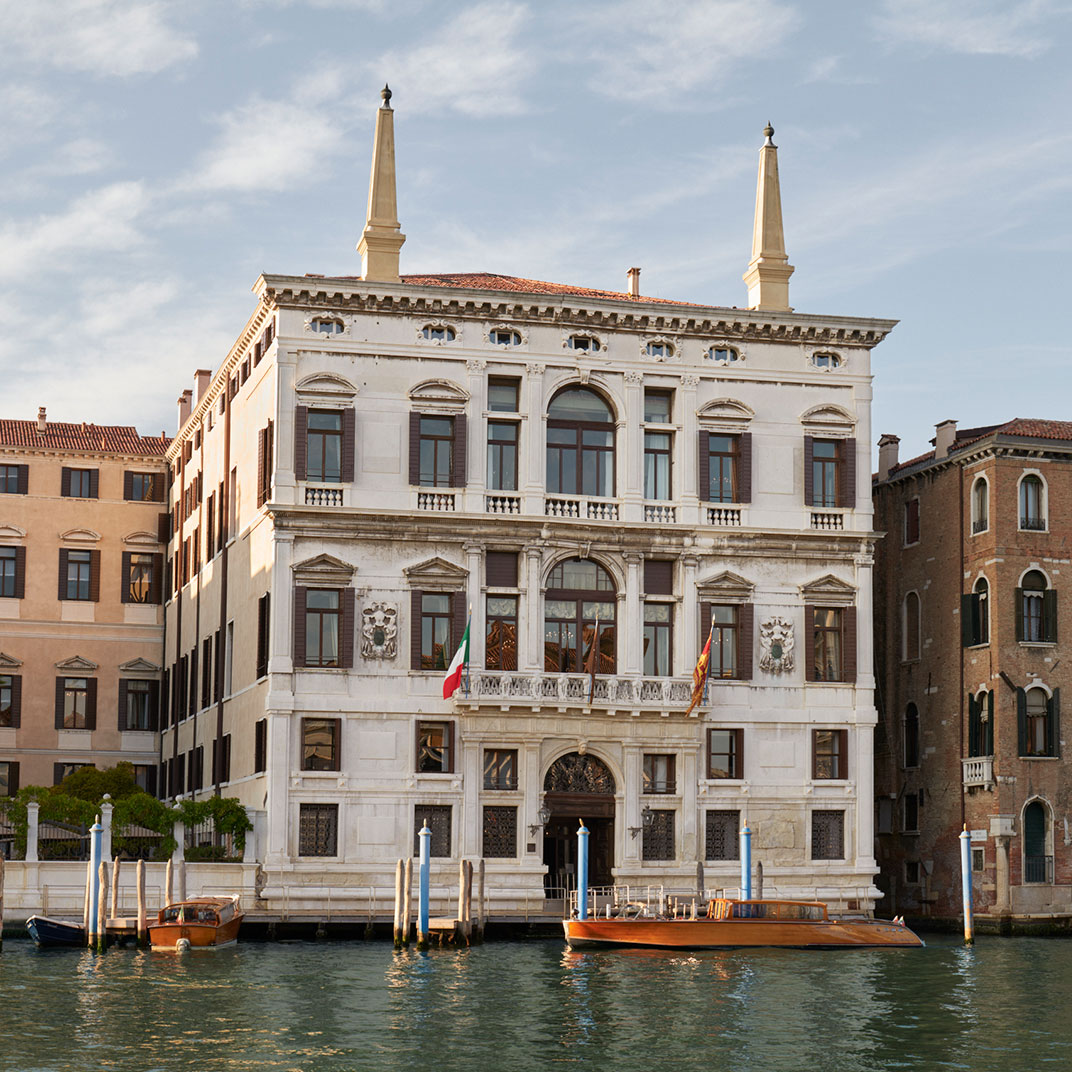
Aman Venice
Venice, Italy
Your eyes do not deceive you: Aman Venice is exactly what the name implies. It’s fitting that Aman Hotels & Resorts, those masters of luxe villas on jade-green desert islands, would choose this as the setting for their first city hotel. Like many of Aman’s far-flung, impossibly photogenic locales, there’s a sense that Venice isn’t quite of this earth. And, more prosaically, they’ve already perfected the craft of the waterborne arrival on those selfsame desert islands, and it’s a skill that transfers seamlessly to Venice’s canals.
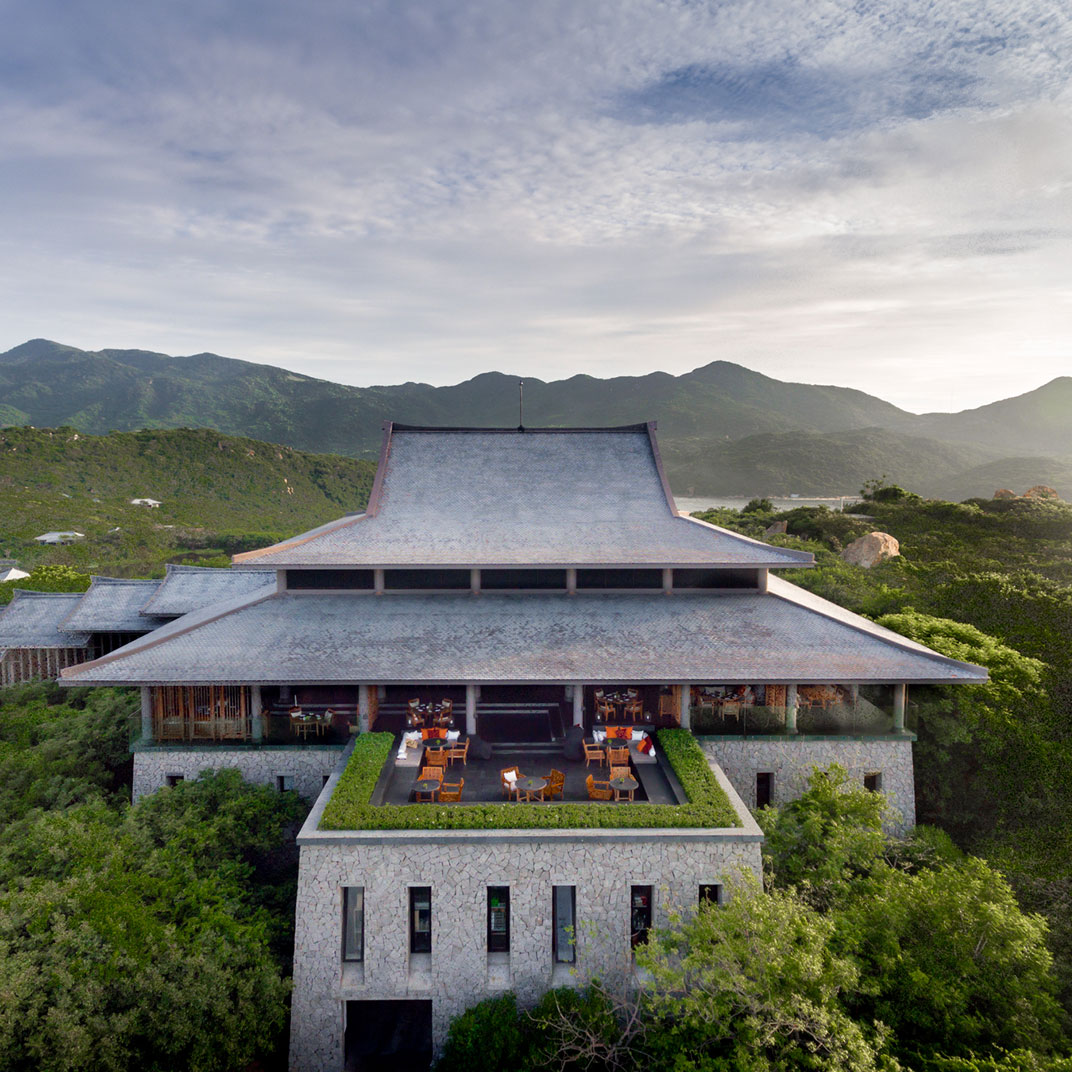
Amanoi
Ninh Thuan Province, Vietnam
Amanoi, the first Aman hotel in Vietnam, is a milestone for both the Aman group and the country’s high-end tourism scene. And it’s a reminder that, among other things, they know how to pick a location: to say that the Nui Chua National Park, on the shores of Vinh Hy Bay, is paradise on earth would perhaps be an exaggeration, but only a slight one — it’s a recognized UNESCO Biosphere Reserve. Here, just down the coast from Nha Trang, Amanoi sits elevated on a hillside, with a commanding view of the beaches and the bay.
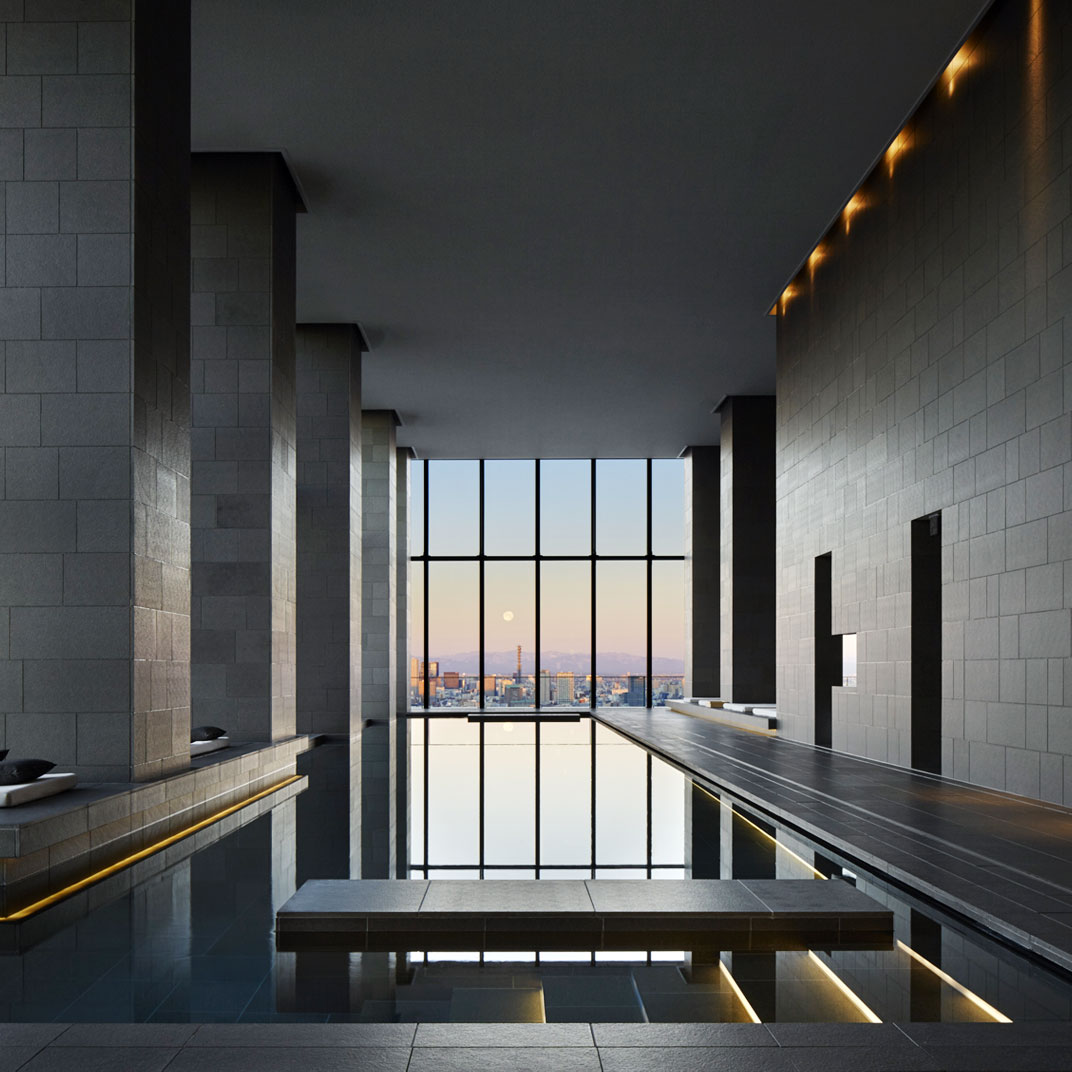
Aman Tokyo
Tokyo, Japan
We’ll admit it: our first thought when we heard whispers of an Aman Tokyo was that they might just have lost the plot. Why would these purveyors of resort perfection bother with the city? And why this particular city, whose high-end hotels are already as close to flawless as any we’ve seen? Well, we were fools to wonder. There might be no challenge that Aman resorts isn’t up to — certainly not Tokyo, where they’ve created something that the rest of the world’s luxury hoteliers will be chasing for a decade or more.
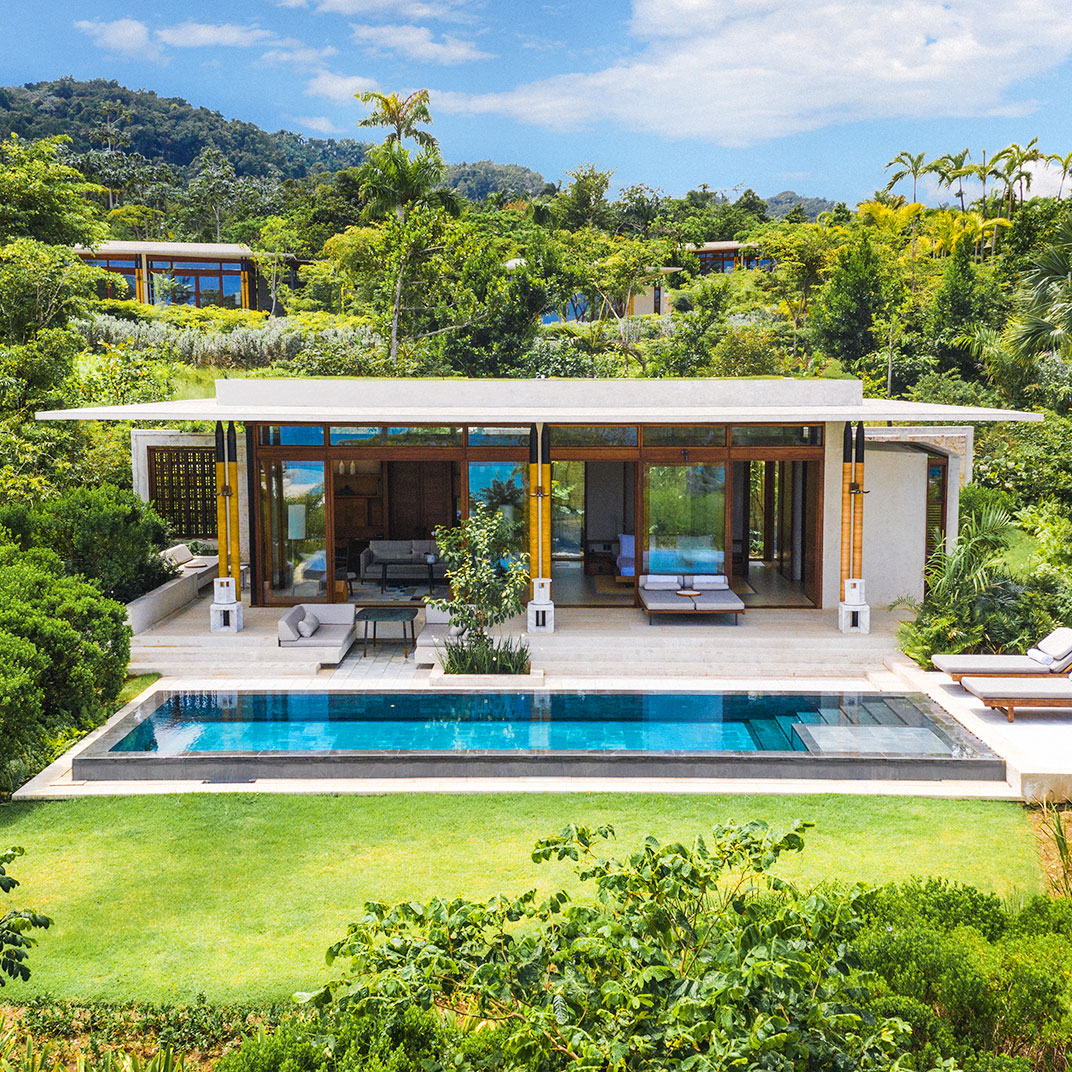
Amanera
Rio San Juan, Dominican Republic
Located on a wildly beautiful stretch of the island’s northern coast, Amanera is remote, and that’s part of the appeal. Like the other Aman resorts, it’s elegant and ecologically sensitive, sprawling and self-contained. Privacy is paramount: all accommodations are located within free-standing casitas scattered along the shoreline cliffs, each offering unobstructed views of the sea. Airy and modern, this is indoor-outdoor living at its best. There’s a minimalist Japanese feel to the high ceilings and wood-framed doorways, the glass panes and low tables and hand-carved screens. The building materials and artwork, however, are locally sourced — being grounded in a specific location is an important part of Aman’s ethos. Each casita features an ocean-facing terrace with lounge space and a dining area, ideal for an al fresco breakfast. Many casitas also feature private swimming pools.
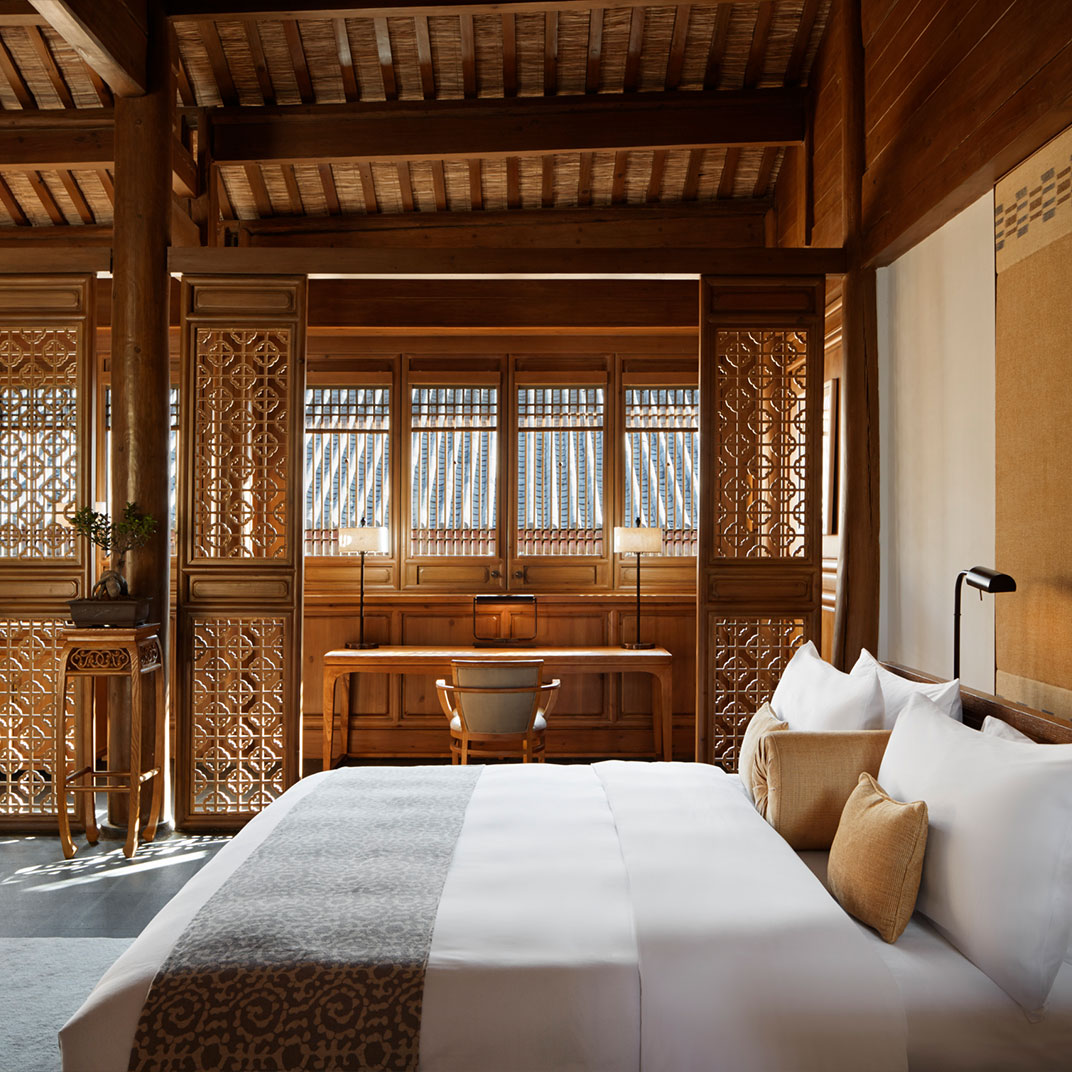
Amandayan
Lijiang, China
By this point an Aman hotel hardly needs vetting, true, but it remains a pleasure to detail their ongoing success story. They’ve hit photogenic gold again here in Lijiang, jewel of China’s Yunnan province, an astoundingly well-preserved repository for the region’s heritage and peerless natural beauty. Amandayan overlooks the impossibly ancient Old Town, a rich lattice of irreplaceable artifacts and architecture with a whimsical penchant for bridges and cobblestone streets.
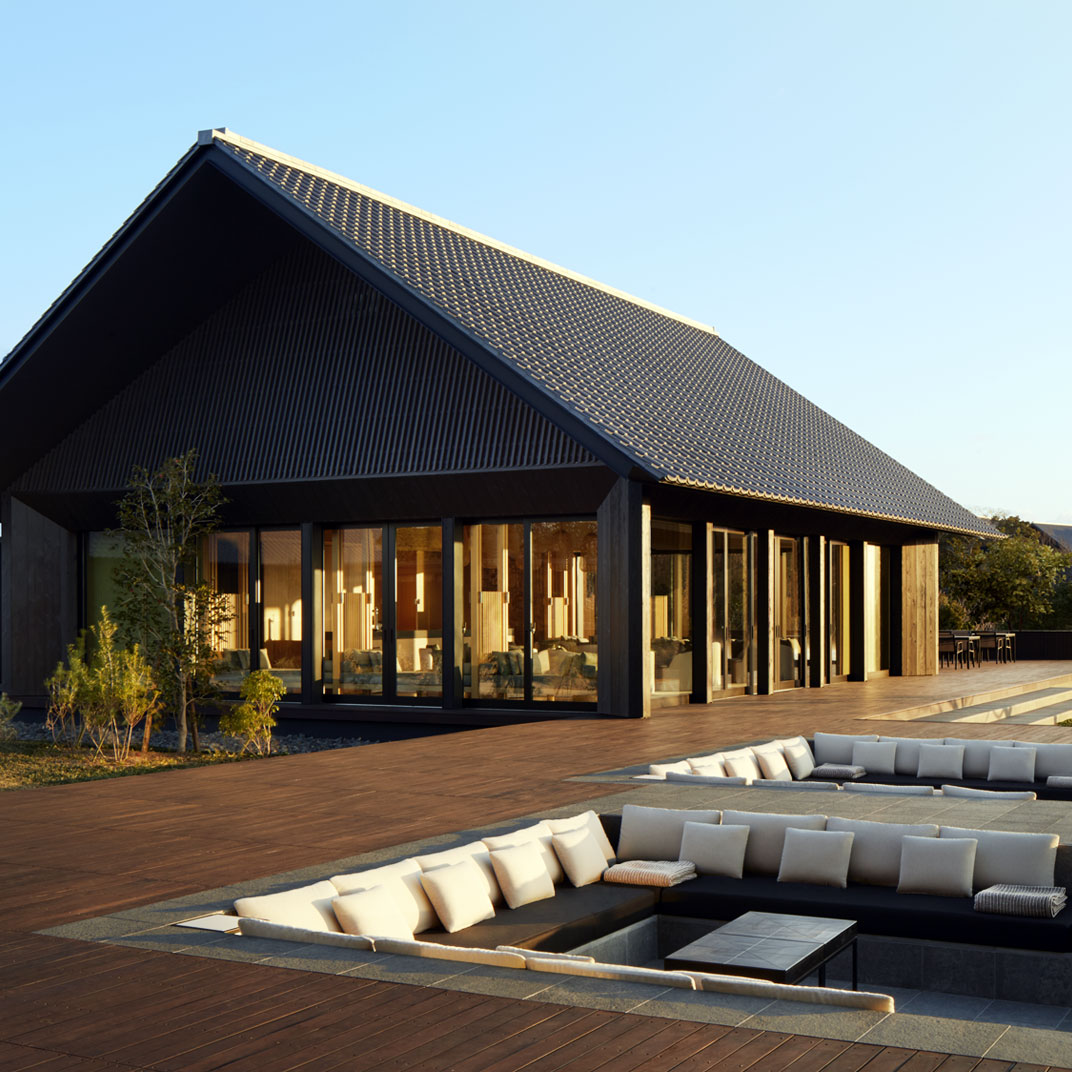
Amanemu
Ise-Shima, Japan
If Aman Tokyo is the urban high-rise luxury hotel par excellence — and trust us, it definitely is — then Amanemu, in Ise-Shima National Park, is the Japanese country inn to end them all. Of course, to call an Aman hotel a country inn is to understate matters rather severely. For although the basic idea of a luxurious rural escape, complete with thermal baths and extravagant multi-course dinners, is familiar to any ryokan aficionado, Amanemu is a thoroughly modern interpretation of these timeless Japanese pleasures.
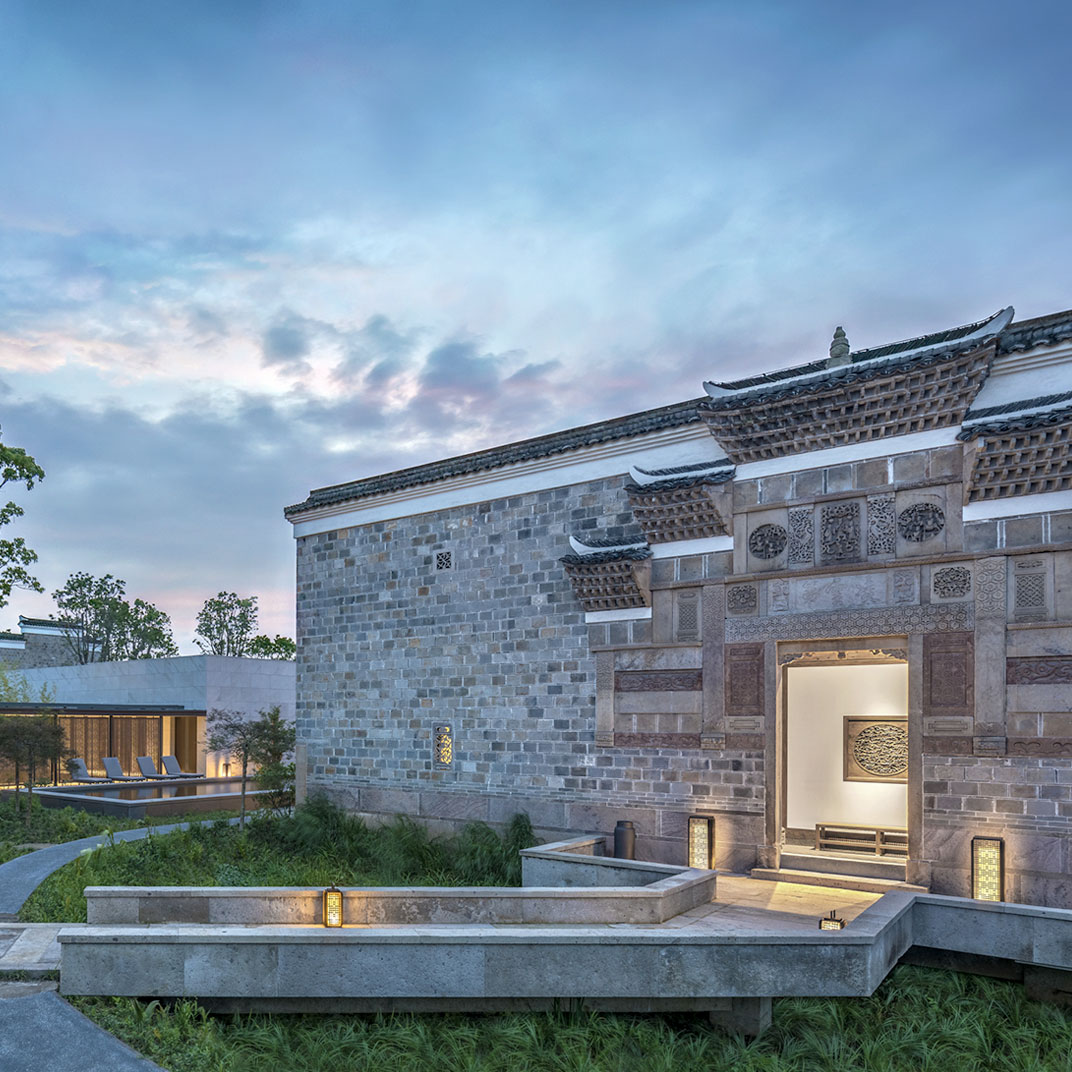
Amanyangyun
Shanghai, China
What do you do when you’ve got an undistinguished parcel of land just outside of Shanghai, and, 700 kilometers away, in Jianxi Province, a collection of historic homes, dating back to the Ming and Qing dynasties, that are about to be subsumed by a dam project? If you’re Mr. Ma Dadong, an entrepreneur and Jianxi native, you spare no expense in rescuing the homes, moving them — brick by brick, stone by stone — to the site of your newest luxury resort: Amanyangyun. And, just for good measure, you transport a complete forest as well, comprising more than ten thousand centuries-old camphor trees, to provide Amanyangyun with a suitably picturesque backdrop.
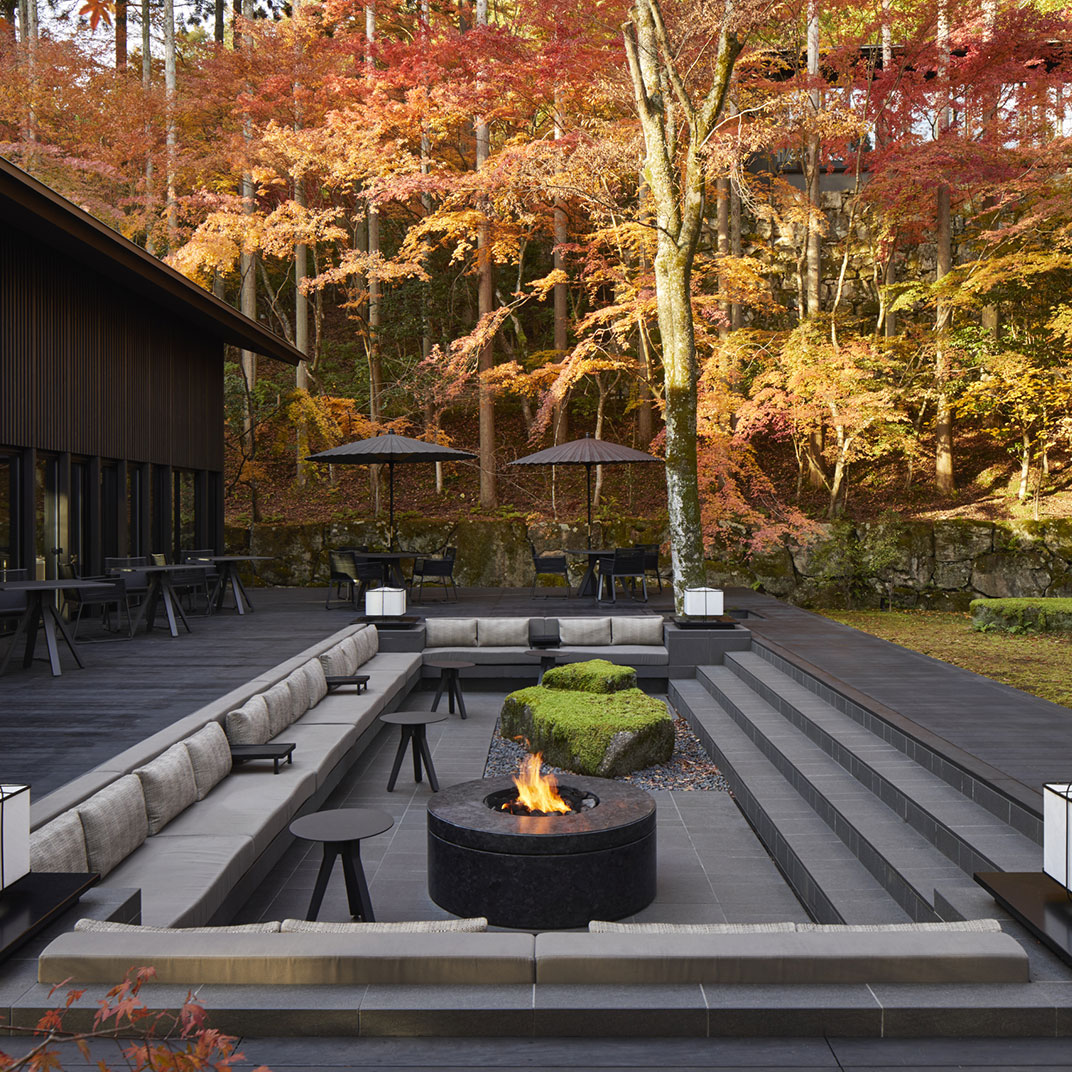
Aman Kyoto
Kyoto, Japan
Aman took their time getting to Japan, but the results have proven to be well worth the wait. The third, after the skyscraper-topping Aman Tokyo and the ryokan-style Amanemu, is set in one of Kyoto’s most extraordinary places: a vast private garden and an expanse of unspoiled forest — within the city limits, at the foot of a wild mountain — that was intended as the site for a textile museum before it became the immaculately designed, fantastically luxurious Aman Kyoto.
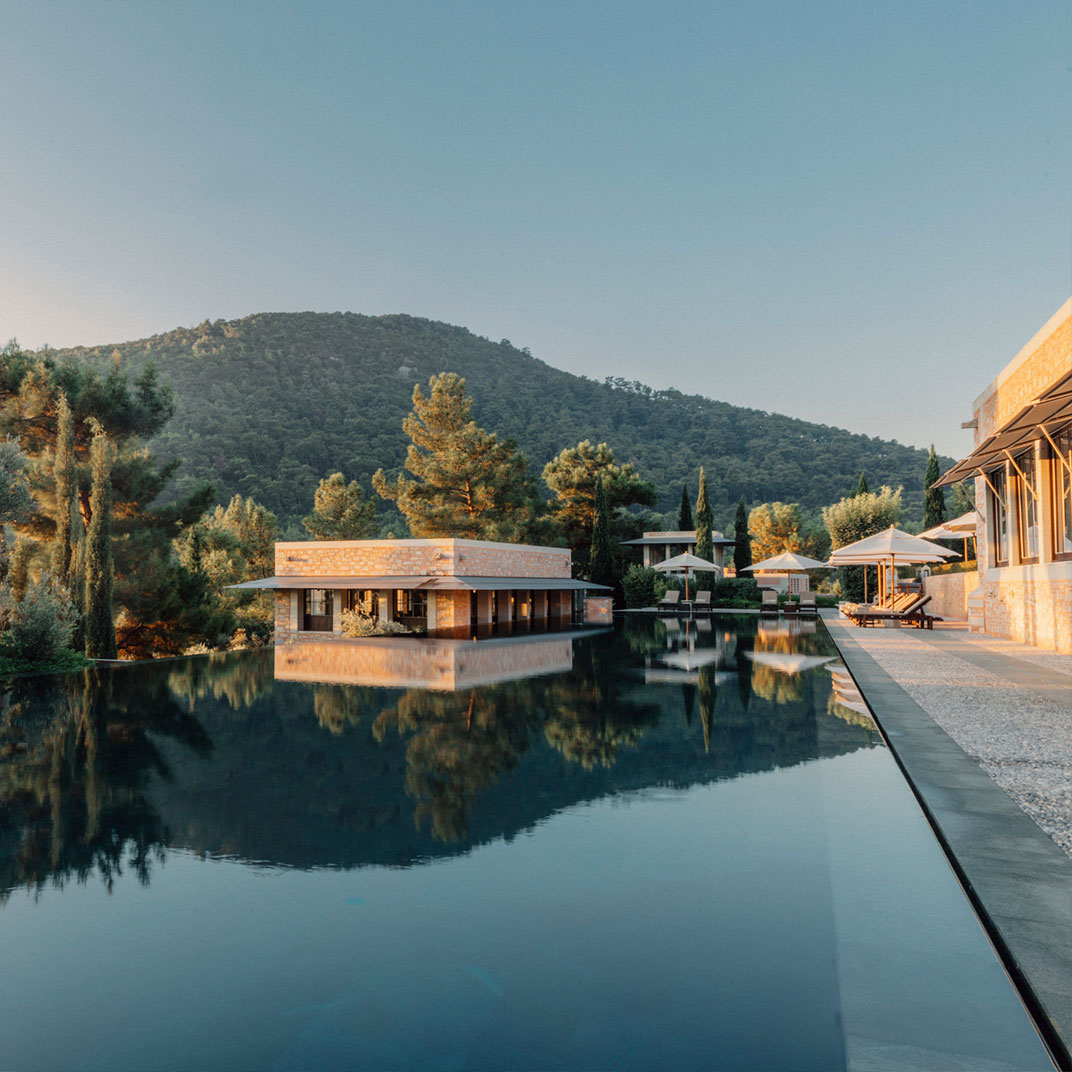
Amanruya
Bodrum, Turkey
Mention the Aegean Sea and the mind quite naturally leaps to Crete and Rhodes, the Greeks living along its shores, to quote Plato, like “frogs around a pond.” But it’s worth remembering that a long section of the Aegean’s coastline belongs to Turkey. It’s here — on a gorgeous peninsula that’s been inhabited since the seventh century BC, home to an important port and one of the Seven Wonders of the Ancient World — that Aman has added another impeccable resort to their collection.


